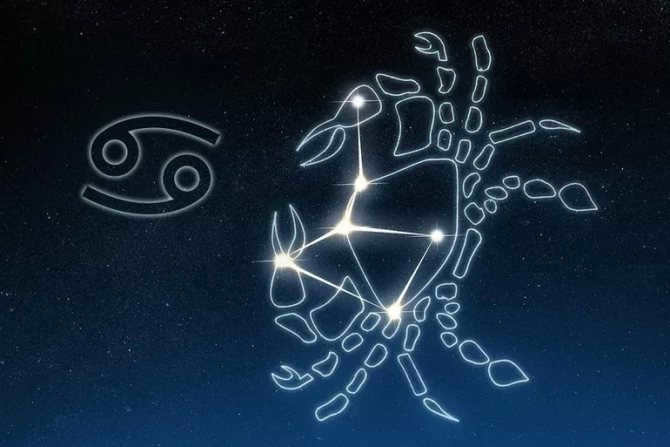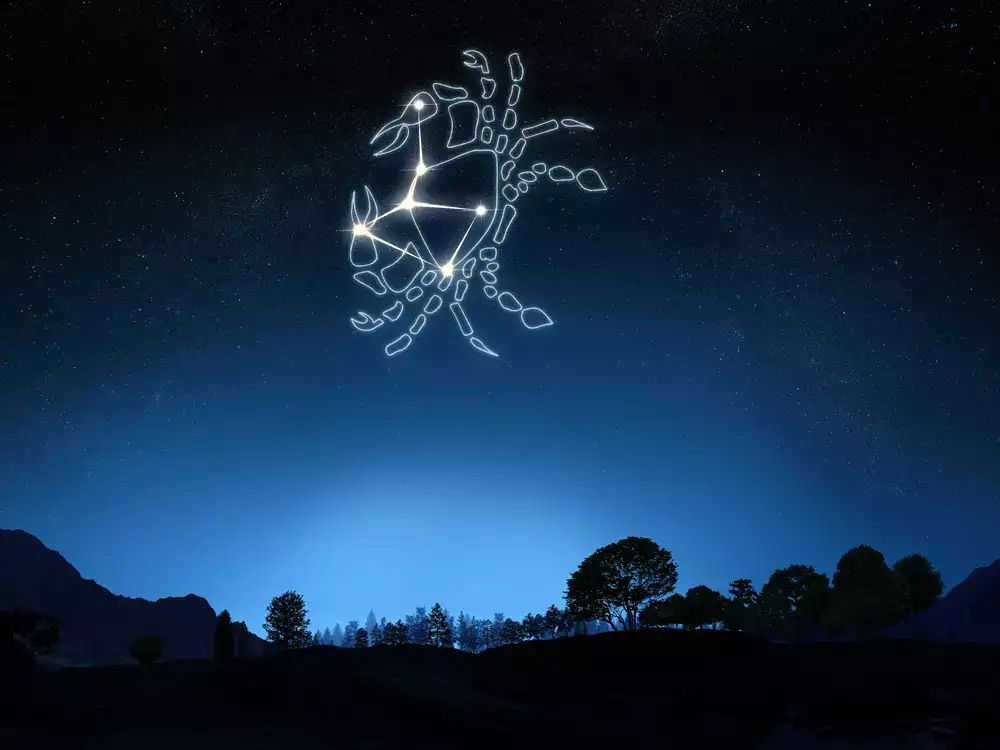
The celestial sphere is home to 12 constellations known as the Zodiac. Positioned between Leo and Gemini, Cancer is the 4th sign in the Zodiac. Resembling an inverted uppercase Y, this constellation lacks prominent stars and can be challenging to identify.
Cancer can be observed in both the northern and southern hemispheres, depending on the season.
Today, we have gathered a selection of intriguing facts about this constellation for you.
No. 1
Legend has it that the constellation “Cancer” in the night sky was placed there by Hera, the goddess who presided over marriage. The tale began with Heracles, the son of Zeus and the mortal Alcmene. Hera, who was Heracles’ stepmother, harbored an intense hatred towards the demigod. She constantly schemed to bring about his demise, but her efforts were always thwarted. In desperation, she drove him to madness, causing him to unknowingly kill his own children and two of Iphicles’ offspring. Once the madness abated, Heracles was consumed with remorse and sought to atone for his actions.
Following a prophecy, he was compelled to serve Eurystheus, who assigned him 12 tasks that seemed impossible. The second task of Heracles was to slay the Hydra, a serpent with many heads that dwelled in the marshes near Lake Lern. Observing Heracles’ progress, Hera decided to aid the Hydra and dispatched a gigantic crab named Karkin, which nipped at Heracles’ ankle, diverting his attention from the Hydra. Enraged, the hero swiftly dispatched the crab and then vanquished the Hydra. In recognition of the crab’s assistance, Hera immortalized it by placing it among the stars.
Number 2
Altarf, located in the Constellation of Cancer, is the most luminous star in the area. This orange giant is situated approximately 290 light years from Earth. Remarkably, Altarf boasts a diameter that is 50 times larger than that of our Sun.
Number 3
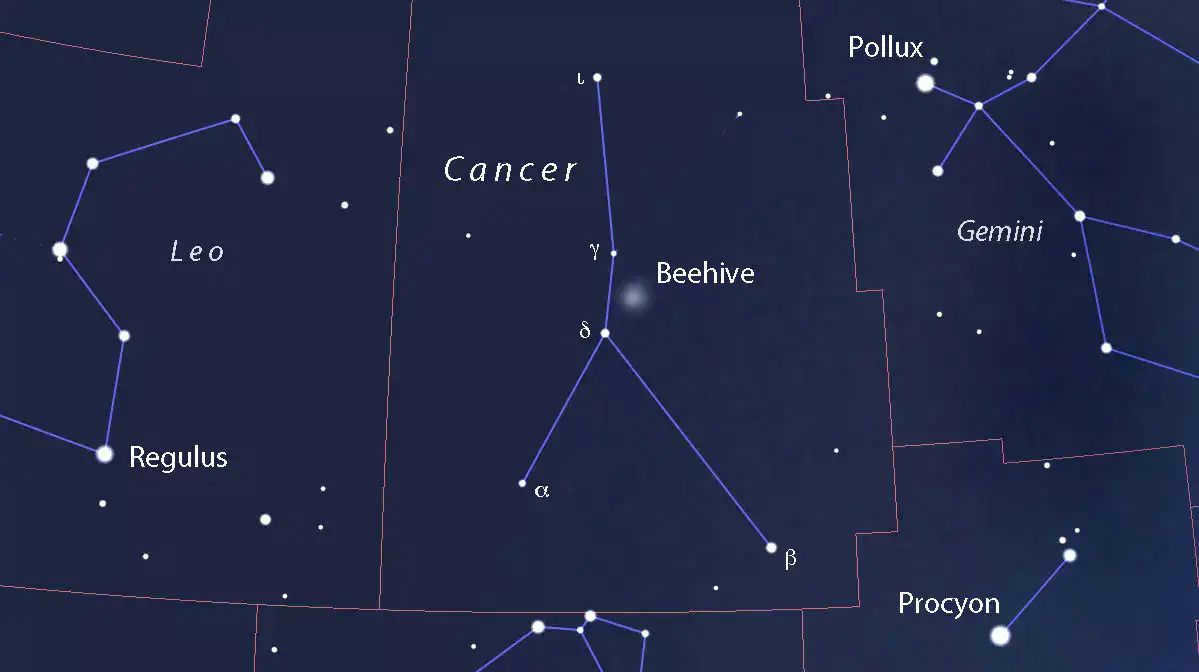
The Greek astronomer Ptolemy was the first to document the constellation of Cancer. However, this star pattern had been recognized by different cultures throughout history, albeit with varying depictions.
For instance, in ancient Egypt, Cancer was symbolized by a scarab, which held great significance as a sacred emblem of immortality.
In Babylonian culture, the constellation was represented not by a crab, but by a tortoise.
Out of the 88 constellations currently recognized, Cancer holds the 31st position in terms of magnitude.
Number 4
The Cancer zodiac sign possesses the following qualities in astrology:
- Date of birth: June 22 to July 22.
- Ruler: Moon.
- Element: Water.
- Stone: Ruby.
- Metal: Silver.
- Color: White, Yellow.
- Character: Responsive, nurturing, intuitive, unpredictable.
- Compatibility: Pisces, Scorpio.
№5
It is situated amidst the 5 constellations:
- Leo in the eastern part.
- Gemini in the western part.
- Lynx in the northern part.
- Hydra and the Little Dog in the southern part.
№6
It is visible in the Northern Hemisphere from late autumn to late spring. In the Southern Hemisphere, it can be observed from summer to autumn.
No. 7
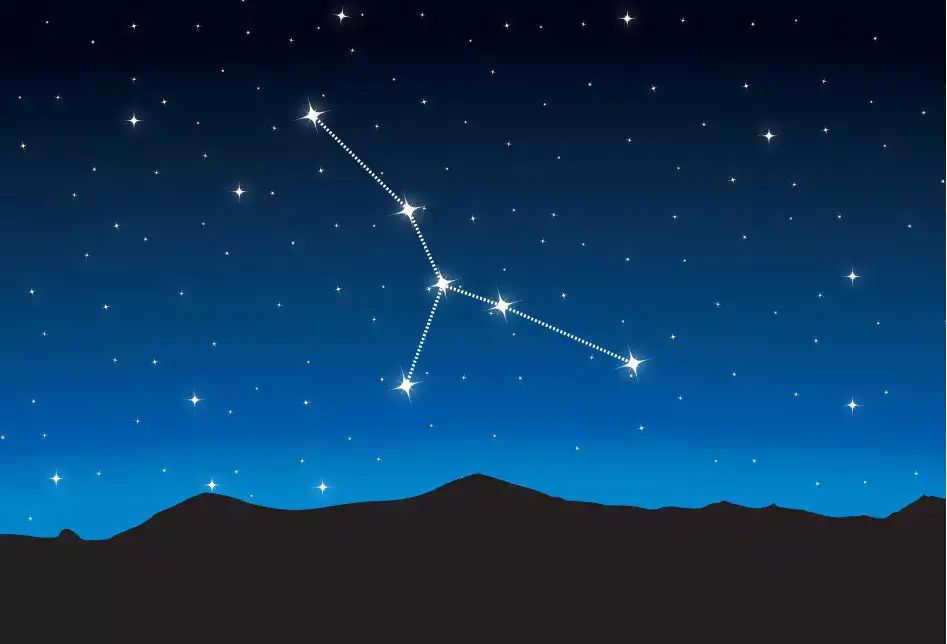
M 67 is a star cluster located in the Cancer constellation. It was first observed in 1779 by Johann Gottfried Köhler. The estimated age of this cluster is between 3.2 and 5 billion years. M 67 consists of over 500 stars, with approximately 100 of them sharing a resemblance to our Sun. Additionally, M 67 is recognized as one of the most ancient dispersed clusters ever detected.
№8
There is an incredibly fascinating exoplanet in orbit around one of the stars located in the Cancer constellation, known as Copernicus. Formerly referred to as 55 Cancer e, it was officially renamed Janssen by the International Astronomical Union in 2015. This remarkable planet has also earned the unofficial nickname “diamond” due to the speculation that its surface is composed of graphite and diamonds.
Number 9
The Delta Cancrida meteor shower is associated with this particular constellation. It occurs from December to February, with its peak in January. Although only 4 meteors per hour can be seen during the Delta Cancrida stream, it still creates an impressive sight.
Number 10
In astrology, Cancer is regarded as a symbol of femininity. Cancer is believed to be ruled by the Moon. Additionally, this zodiac sign is associated with a decrease in aggression, as it marks the decline of Mars’ influence.
Cancer is represented by the element of water. Individuals born under this sign are often melancholic. They are easily hurt and tend to worry about even the smallest things. Furthermore, they have a minimal reaction to their surroundings.
Blogger and the primary writer of the Interessno.ru website. Ever since I was a child, I have had a passion for reading books and acquiring knowledge in various fields. I have obtained two higher education degrees. Currently, alongside managing this online platform (as well as a few others), I am also an instructor at a college.
I actively engage in sports and adhere to a wholesome way of life. I am always willing to lend a hand and am open to communication. Feel free to reach out to me through the email address provided in the footer of this website.
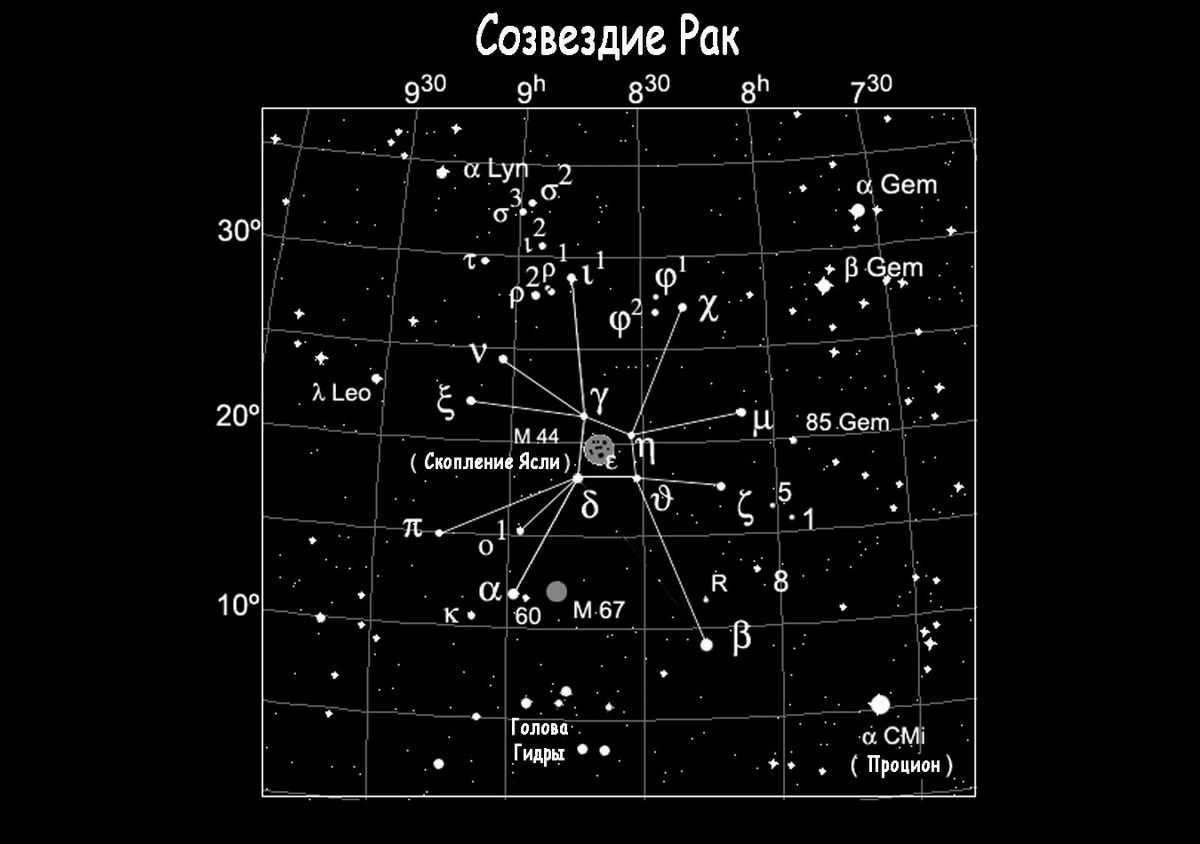
In the night sky, the stars of the Cancer constellation appear very faint. In ancient times, approximately two millennia ago, the summer solstice coincided with this specific zodiac sign. However, due to the Earth’s axial precession, the reference point has shifted to the constellation of Taurus.
Observation
Finding the constellation Cancer in the night sky can be quite challenging. However, it stands out due to its brightest star, which has a magnitude of only 3.5. To spot the stars in the Cancer constellation, one must venture outside the city, away from the dust and the glare of artificial lighting. Facing south is essential. Fortunately, in this part of the sky, the constellations Leo and Gemini are easily visible and have distinct and recognizable shapes. Positioned between these two constellations, slightly south of the ecliptic, lies Acuberance, one of the prominent stars in the Cancer constellation. On July 20, the Sun passes through this star. The Cancer constellation can be observed throughout Russia during the winter months.
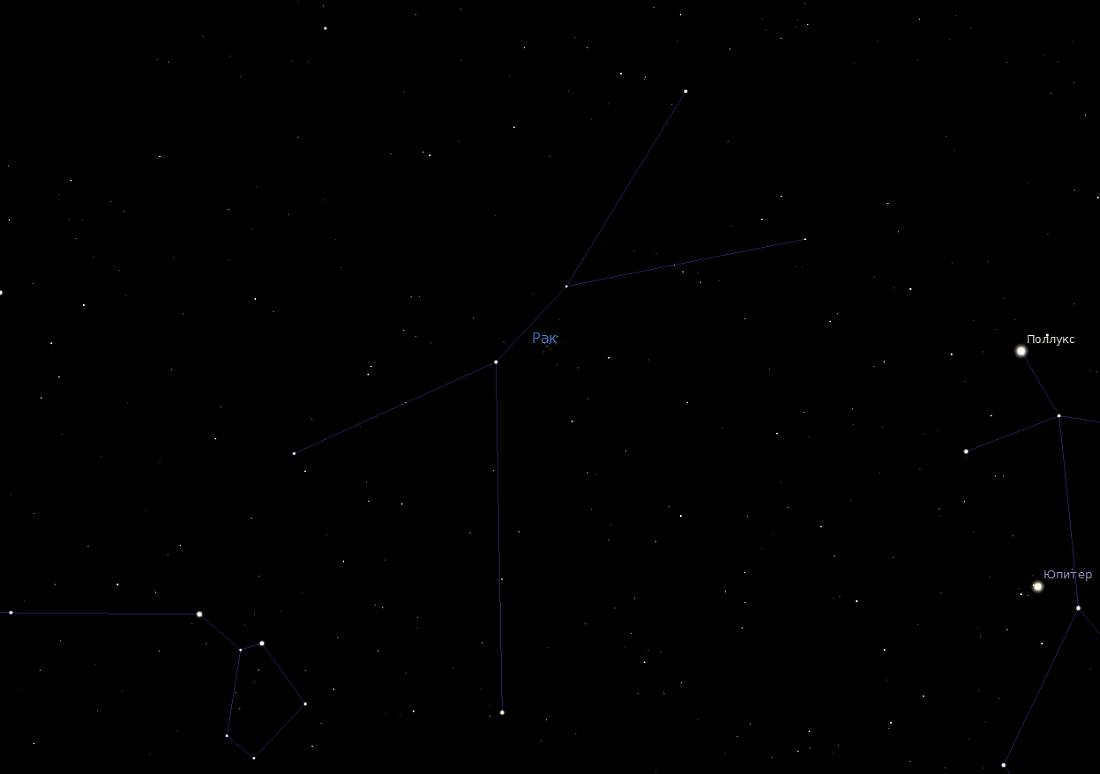
Photograph of the constellation Cancer. This image is from a program used in planetariums.
Fascinating entities
Despite its limited visibility, the constellation Cancer possesses captivating entities. Within its boundaries, one can observe binary systems, dispersed star clusters, as well as spiral and elliptical galaxies.
Altarf – The most luminous star in the constellation Cancer. It possesses a brightness of 3.5 stellar magnitude.
Acubens – A binary star system that can be seen with the naked eye.
Zeta Cancer – is a fascinating double star that consists of two components that complete one orbit every 60 years, and is orbited by another star with a period of 1150 years.
Groupings
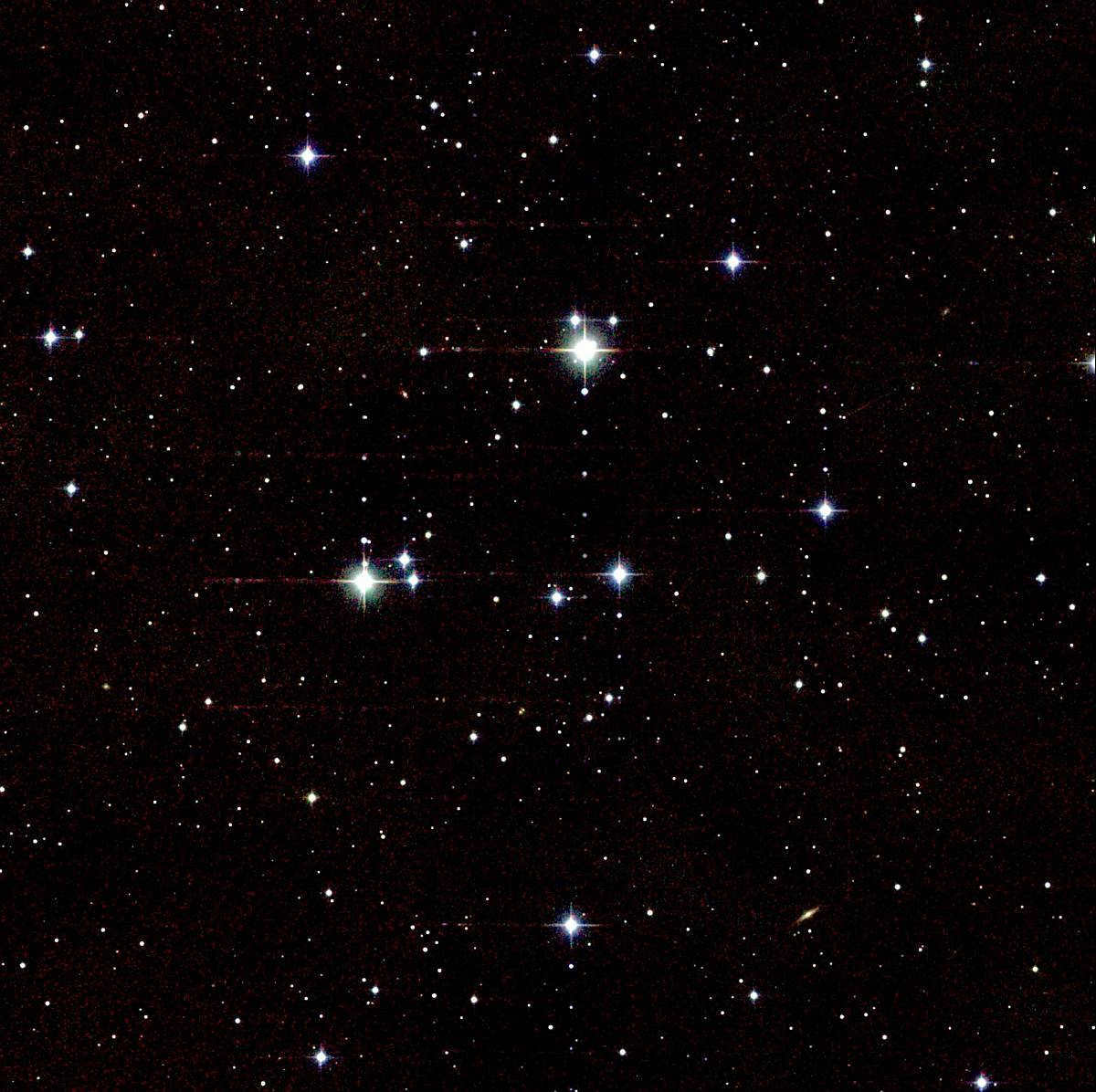
Photo of the scattered cluster Nursery
Located in the Cancer constellation in the celestial sphere, there exists a renowned star cluster known as the “Nursery”. This particular cluster is widely recognized as one of the most prominent in the night sky.
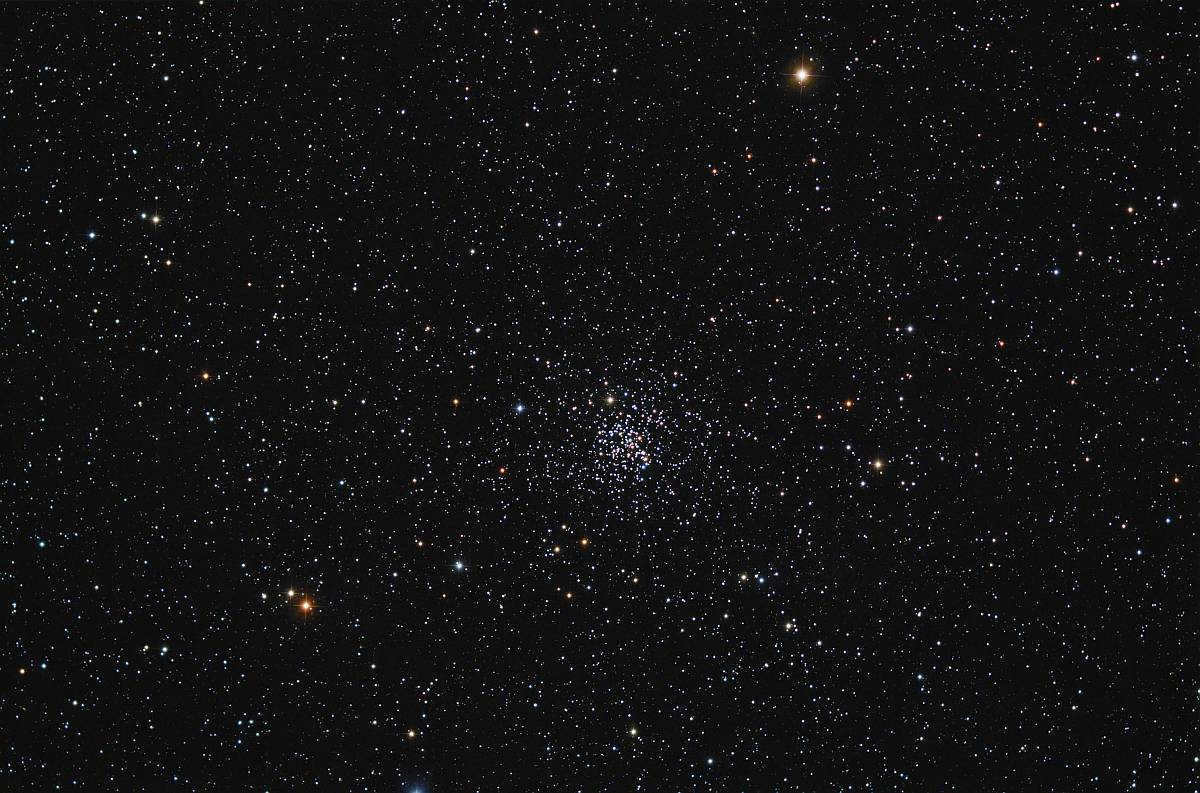
Unique Photo of the Dispersed M 67 Star Cluster
In addition to these star clusters, the constellation of Cancer also offers a chance to observe M 67 – NGC 2682, which is currently the oldest known cluster in scientific records. It has an estimated age of around 4 billion years. Out of all the known clusters, only two are older than M67. M67 contains approximately 500 stars with brightness ranging from 10 to 16 stellar magnitudes.
Another fascinating aspect of M67 is that most of its star clusters follow the main plane of the Milky Way. However, this cluster is relatively distant from that plane.
Galaxies
NGC 2775 is an incredibly bright and expansive galaxy, boasting a remarkably distinct nucleus. With a star magnitude of 11.2, it shines brilliantly in the night sky. This awe-inspiring celestial wonder can be observed through a telescope with a magnification of 100x.
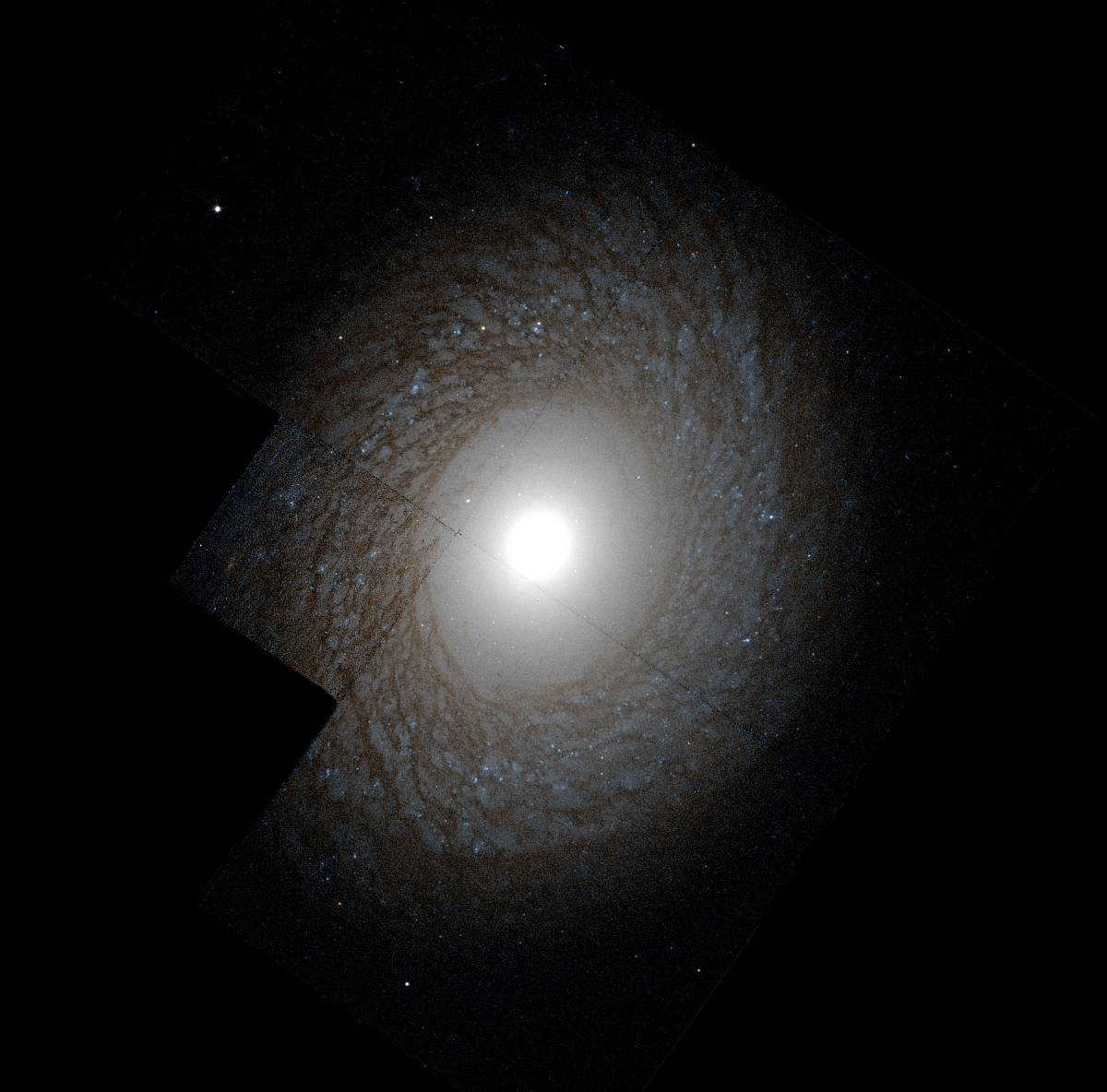
NGC 2775 is a galaxy that can be found in the constellation Cancer.
NGC 2535 and NGC 2545 are spiral galaxies with easily identifiable positions. They can be found near ψ Cancer and μ Cancer, respectively. Both galaxies have a similar brightness, which is approximately 12.4 star magnitudes.
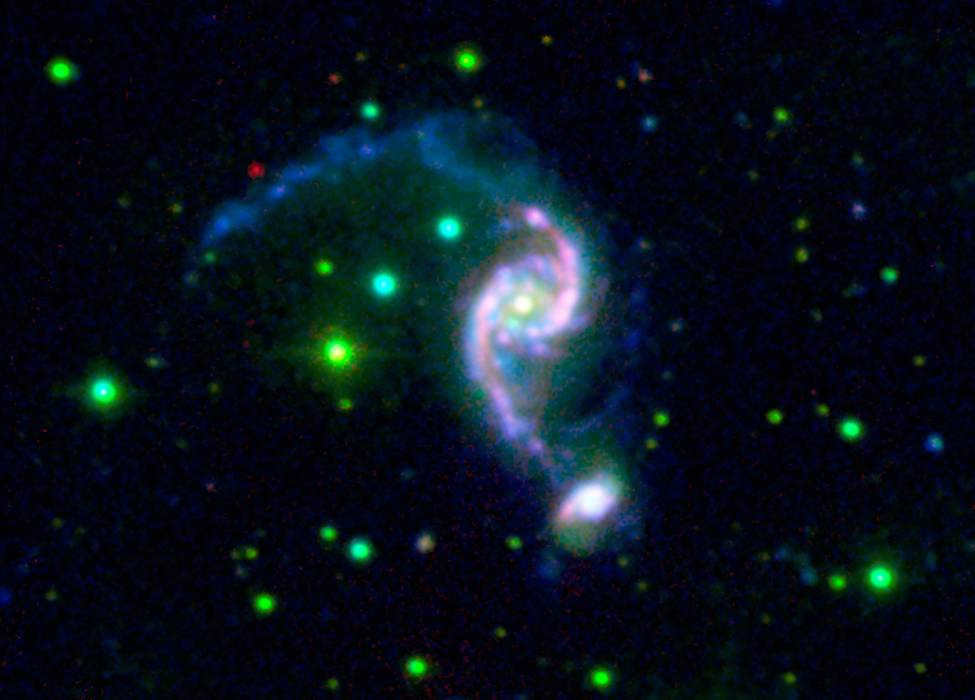

An image of NGC 2535 captured by the Spitzer infrared telescope.
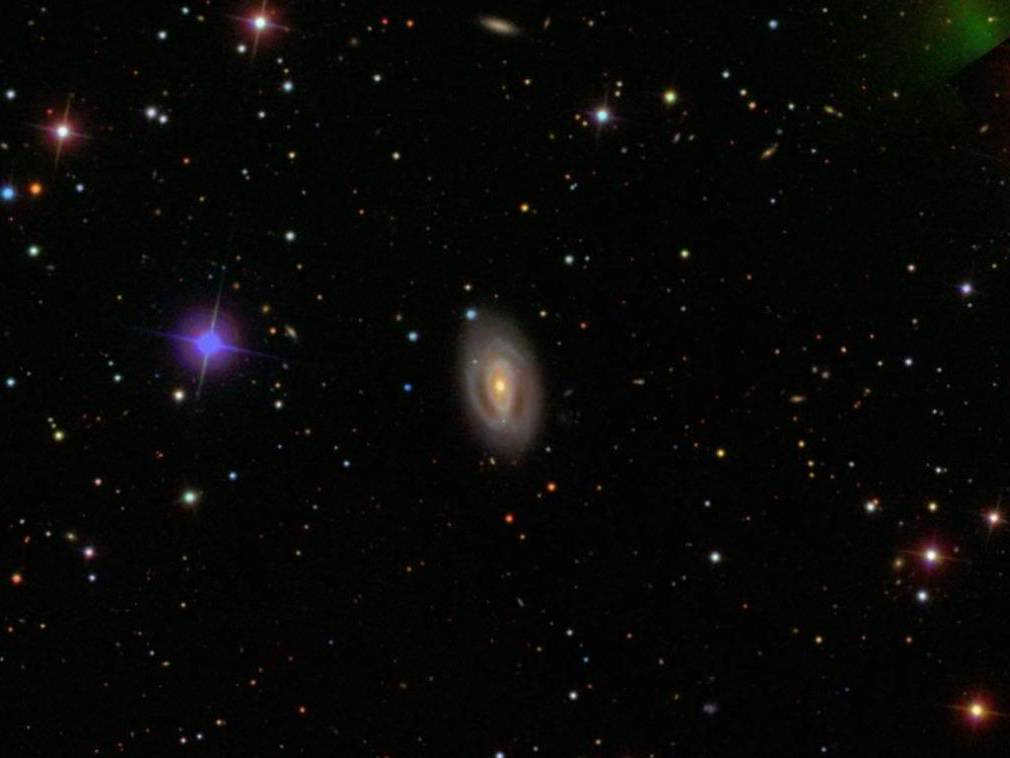
Elliptical galaxies NGC 2749 and NGC 2672 are present in the celestial sky. NGC 2749 possesses a luminosity of 12, equivalent to 4 star magnitudes, while NGC 2672 exhibits a brightness of 11.6 star magnitudes. Both of these galaxies emit very dim light. Adjacent to these two galaxies, one can observe NGC 2673 and the merging galaxy NGC 2744.
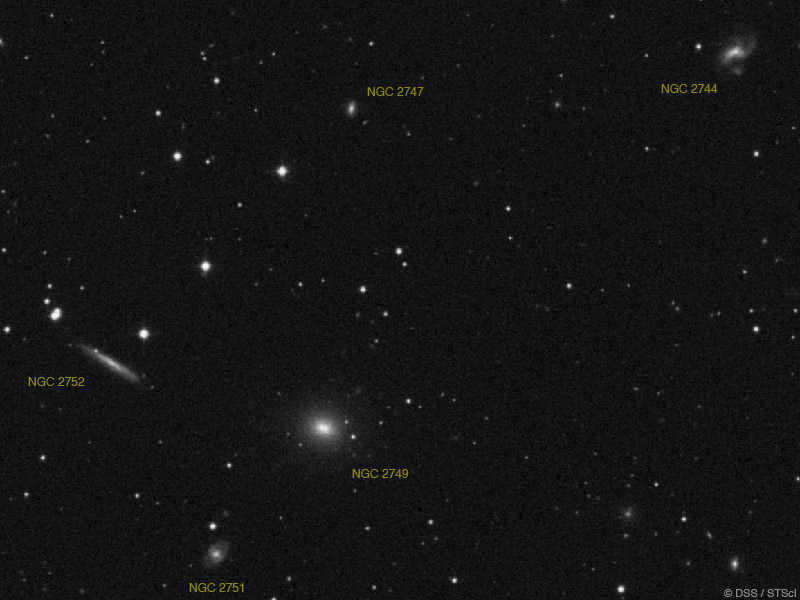
This picture displays a multitude of galaxies, specifically NGC 2749, NGC2747, NGC 2744, NGC 2751, and NGC 2752.
Background
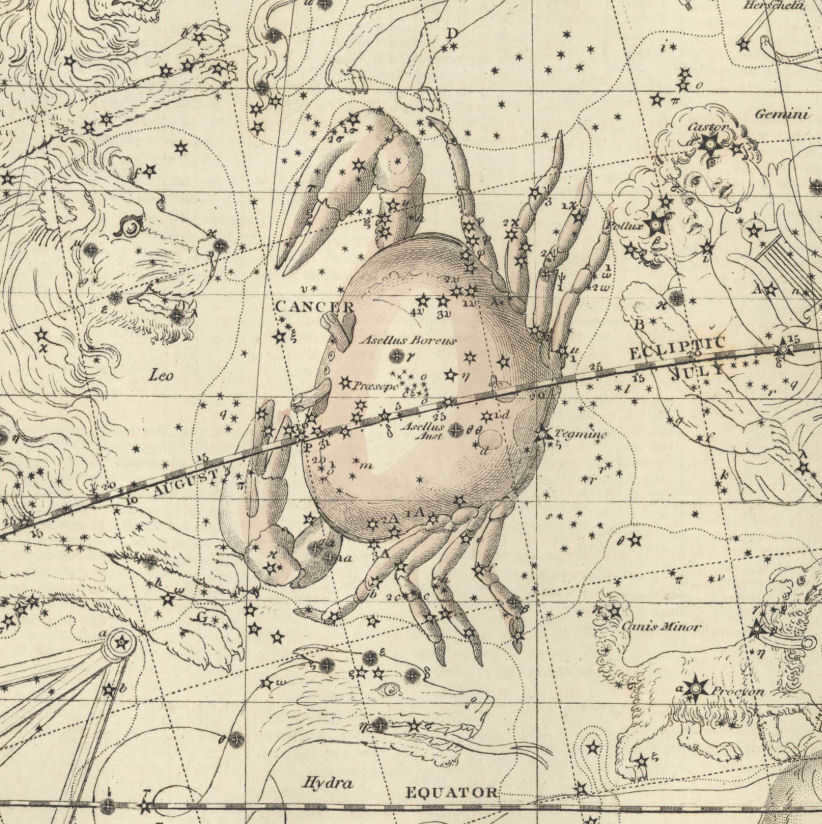
Ancient manuscripts depict the constellation
During the early stages of the development of astronomical terminology, approximately two millennia ago, the winter solstice was situated in this particular constellation. As a result, the highest latitude of the Northern Tropic was identified as the Tropic of Cancer. In the “Almagest,” the oldest classical work on astronomy authored by Claudius Ptolemy, this constellation is featured. However, it is important to acknowledge that Galileo was the first to distinguish the individual stars within the cluster known as “The Nursery” by Galileo.
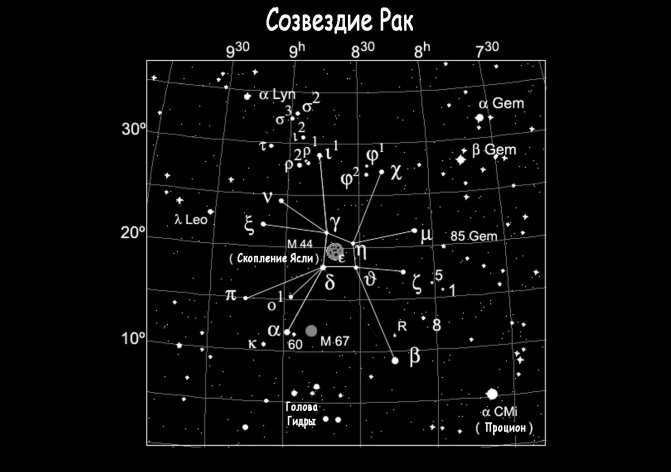
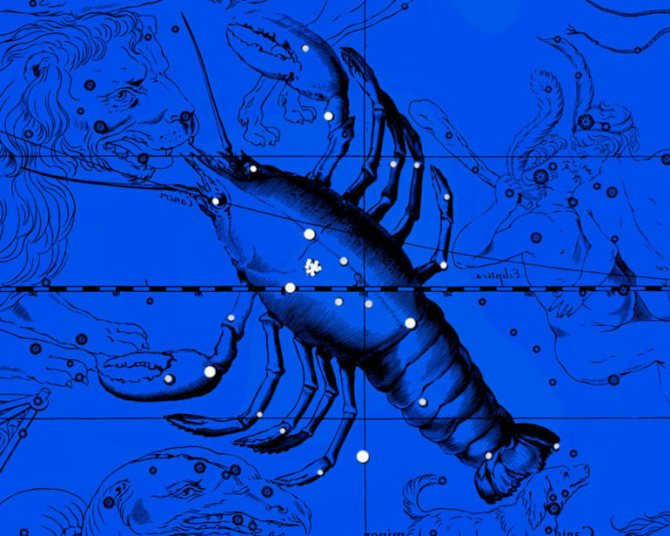
In the northern sky, you can find the zodiacal constellation known as Cancer. It is characterized by its interesting facts, star map and chart, myth and legend, as well as its bright stars and objects.
Located in the northern sky, Cancer is a constellation that translates from Latin as “crab” or “crawfish.” It is considered to be the dimmest among the 12 zodiacal constellations, which represent the 12 signs of the zodiac in astrology. The symbol of Cancer represents water. The Greek astronomer Ptolemy first listed it in the second century.
The constellation Cancer is home to well-known celestial entities, including the open clusters of the Crèche (Messier 44), Messier 67, and the interacting spiral galaxies NGC 2535 and NGC 2536.
Hera placed Cancer in the sky

In ancient Greek mythology, there is a fascinating tale surrounding the formation of the Cancer constellation. The story is intertwined with the legendary 12 labors of Hercules. As part of his incredible feats, Hercules bravely defeated the fearsome hydra. However, his victory did not sit well with the goddess Hera, who sought to undermine his success. To accomplish this, she cunningly dispatched a crayfish or crab to distract the hero.
There are differing accounts of what happened next. Some versions suggest that Hercules delivered such a powerful kick to the crayfish that it was catapulted into the heavens, where it transformed into a constellation. Alternatively, it is believed that Hercules simply crushed the creature underfoot. Regardless, after the intense battle, Hera felt a sense of sympathy towards the crayfish and decided to immortalize it in the night sky as a token of gratitude. However, due to its failure to fulfill its intended purpose, the constellation remains relatively faint and inconspicuous to this day.

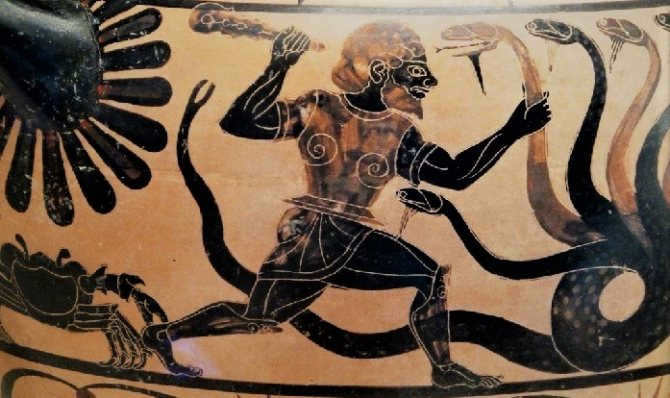
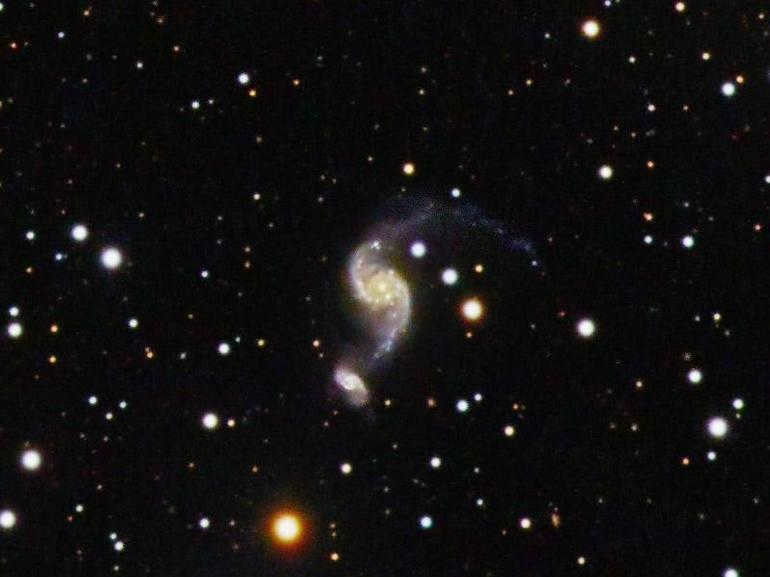
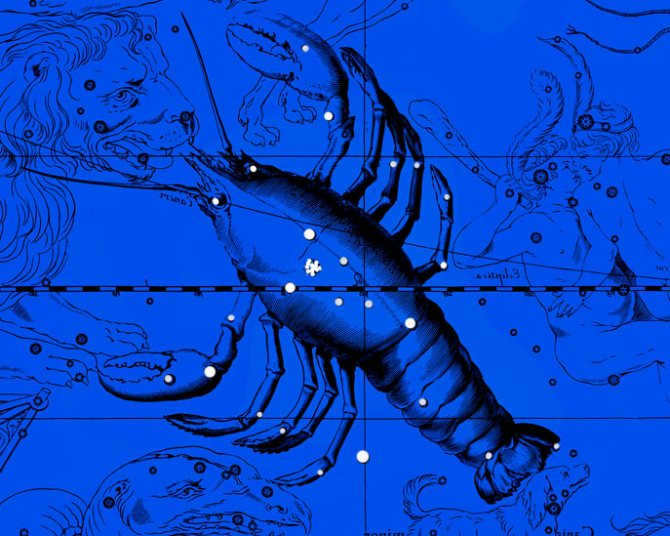
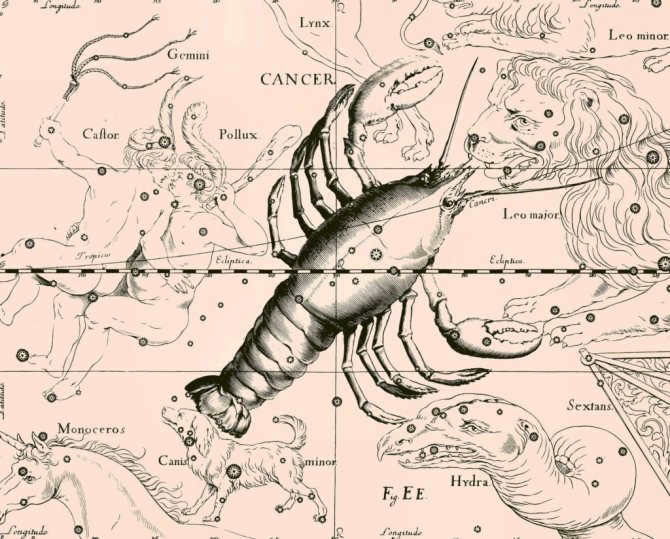


An intriguing fact about the Cancer constellation is its inclusion of numerous exoplanets, with the most renowned being the 55 Cancri e. It was once dubbed the “diamond world”, although this moniker is not used elsewhere. Initial observations of the exoplanet in 2010 revealed that the star it orbits contains more carbon than oxygen. In 2012, a subsequent study focused on determining the radius and mass of this celestial body.
Based on its composition, it was hypothesized that the planet possesses a substantial diamond layer beneath a massive graphite surface.
Nevertheless, a study conducted in 2013 discovered that there could be a considerably lower quantity of carbon on Earth than previously believed, suggesting that it might not actually be “diamond” after all. Additionally, it has been revealed that the host star of the planet contains 25 percent more oxygen than initially estimated.
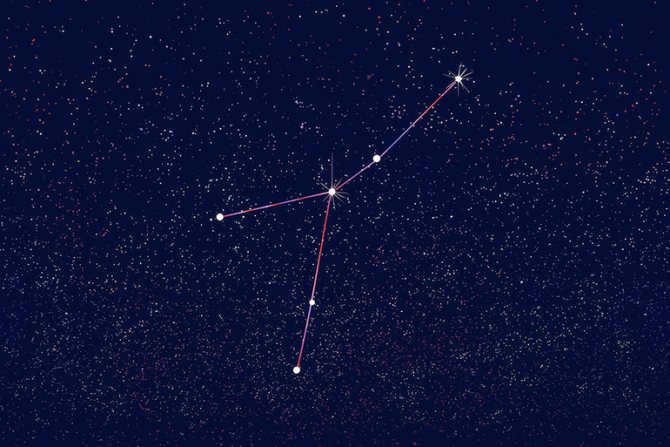
The Spitzer Space Telescope has been observing the heat emissions of 55 Cancri e, and findings from 2013 suggested that the planet might possess a high level of humidity and warmth. Research conducted in 2016 proposes that the planet could be extremely hot, with its surface likely covered in flowing lava. During the day, temperatures on the exoplanet can reach an extreme 4000° F, or approximately 2400° C, while dropping to half that at night.
Contemplating the arrangement of the celestial sphere is truly captivating. The multitude of shimmering points in the darkness appears to be infinite. This notion is likely true, as the opposite has not yet been proven. However, despite the vastness of space, celestial entities, much like humans, have their own neighbors.
Leo can be found to the east of Cancer. Legend has it that Leo represents the Nemean Lion, which was slain by Hercules. The best time to spot Leo is on a clear evening in late April. Hydra, on the other hand, is situated to the south of Cancer and is known as the largest and longest constellation in the sky.
Hydra covers a vast area of over 1,300 square degrees and is most visible during late spring. The Lesser Dog is located southwest of Cancer and comes right after the constellation Orion.
Ptolemy was the first to document the constellation

Claudius Ptolemy was the first to document information about this constellation, ensuring its preservation for future generations. Ptolemy, an esteemed astronomer living in Alexandria, meticulously described the 47 oldest constellations in his renowned work Almagest around 150 AD.
Despite the passage of time, his study remained influential for over 1,500 years. Among the constellations featured in his treatise was Cancer, solidifying Ptolemy’s distinction as the inaugural chronicler of its existence.
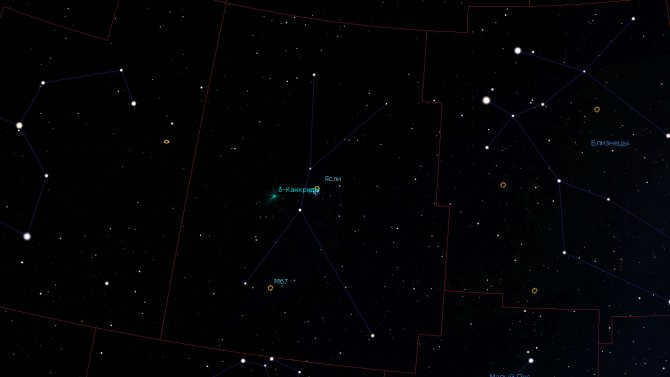
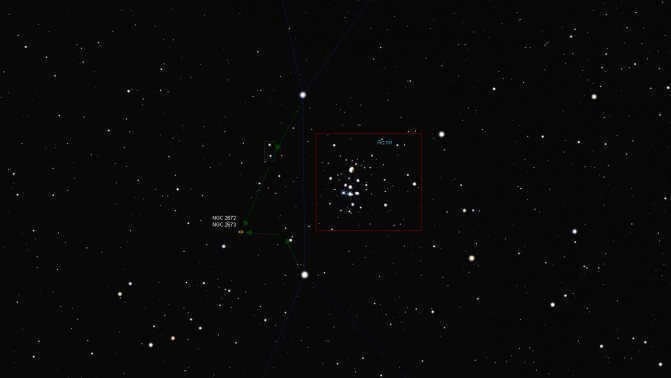
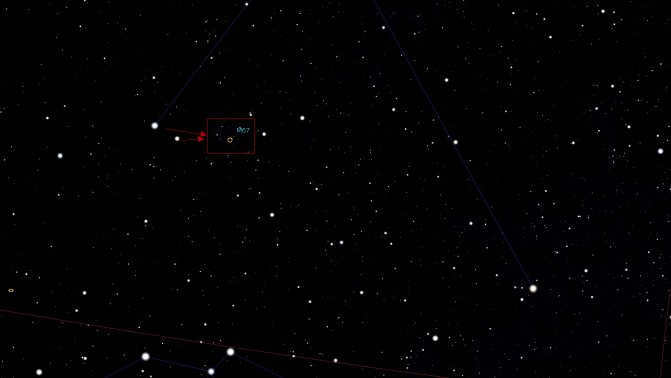
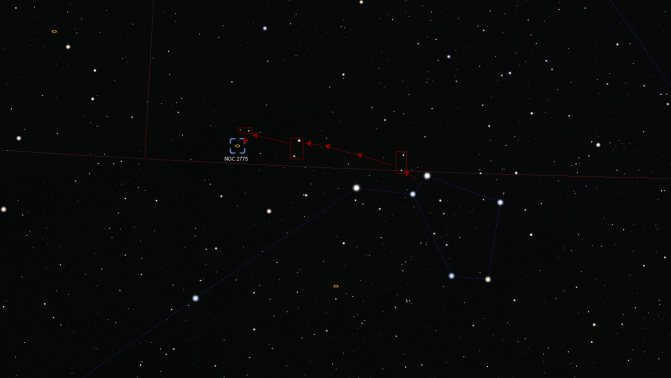
Number 3

The Greek astronomer Ptolemy is credited with the initial description of the Cancer constellation. However, this constellation has had various representations in different cultures throughout history.
For instance, the ancient Egyptians depicted this constellation as a scarab, which held great significance as a symbol of immortality.
In Babylonian culture, a turtle was used to represent this constellation instead of a crab.
Out of the 88 constellations known, Cancer ranks as the 31st largest.
It is situated amidst five constellations.
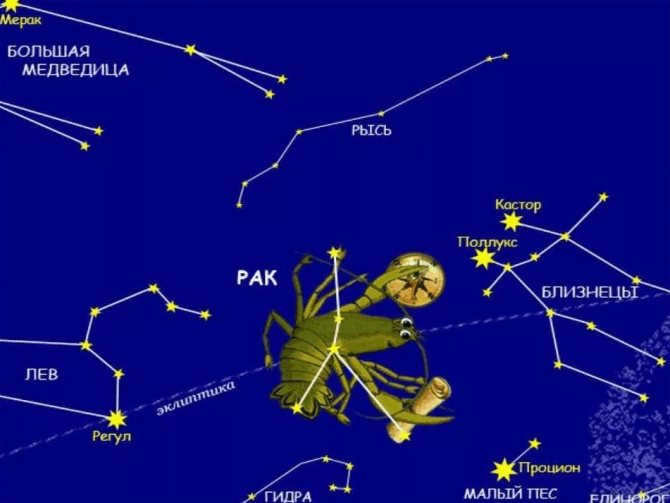
The constellation Cancer is situated in the northern hemisphere. It becomes visible only on the brightest nights. To locate it, you need to direct your gaze between the constellations Leo and Gemini.. These two constellations are well-known as zodiacal constellations. However, not everyone remembers the fact that Cancer is surrounded by more than just these two.
It is surrounded by other constellations such as the Canis Minor, Hydra, and Lynx.. In total, Cancer is positioned between a total of five constellations.
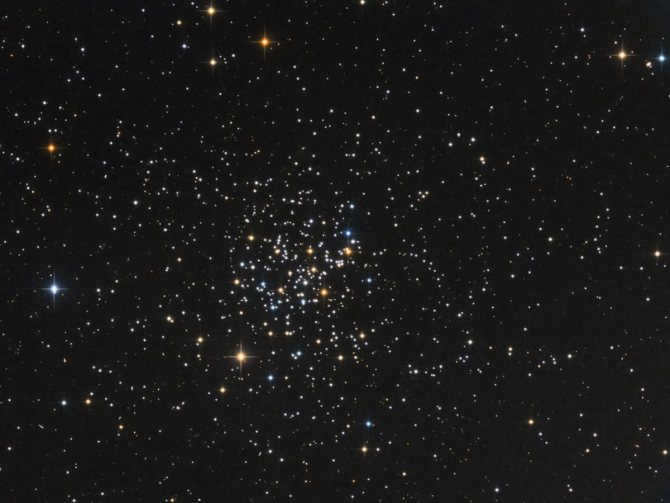
The Cancer constellation is home to a number of dispersed star clusters. Star clusters are formed from a single molecular cloud and typically consist of stars that are roughly the same age.
Among these clusters is M67, which is considered the oldest diffuse star cluster of its kind. Scientists estimate that it is between 3 and 5 billion years old. M67 contains over 500 objects, including 100 similar to our own Sun, as well as some classified as red giants.
Additionally, it is home to 30 blue “straggling” stars that are “backward” in age. This diversity provides valuable insights into stellar evolution.
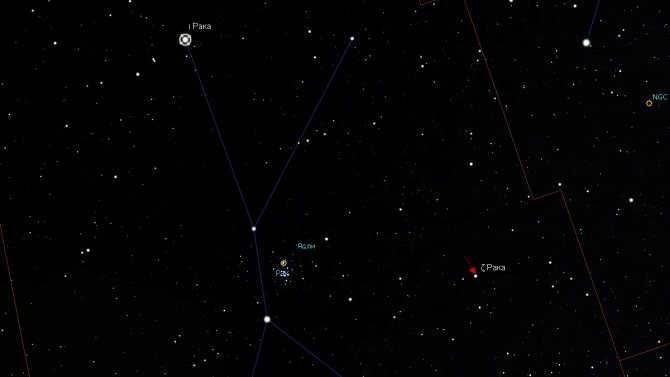
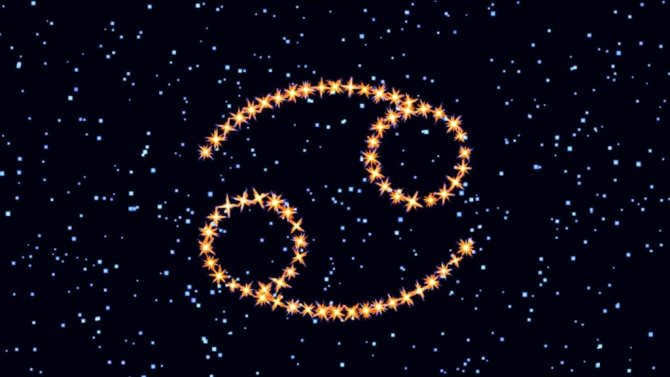

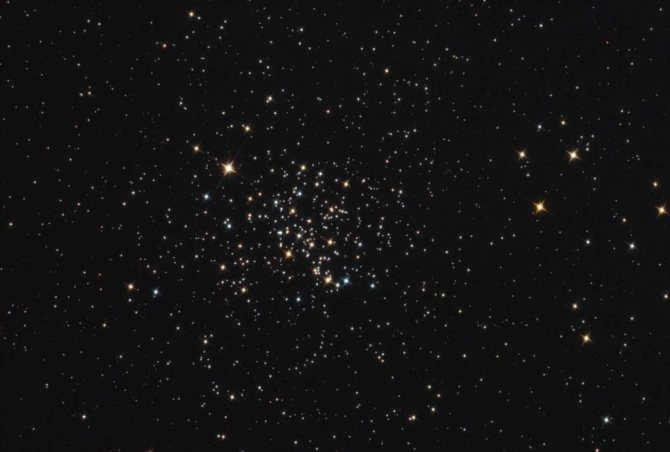
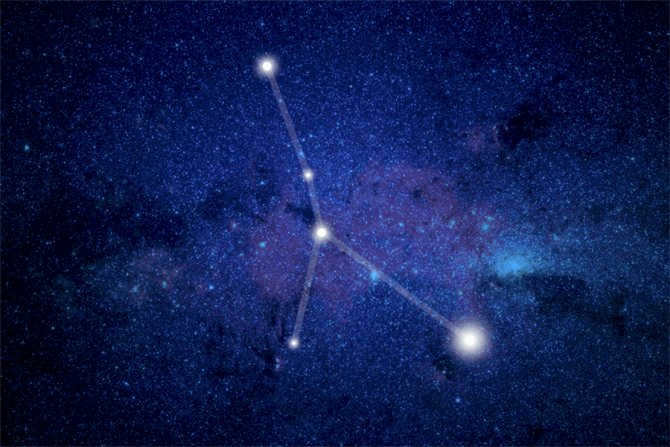
Altarf is the Beta Cancer star. Altarf is a binary star system consisting of an orange giant and its companion. It is situated in the Beta constellation and is approximately 290 light years away from Earth. The name Altarf is derived from the Arabic language and is formed by combining the words “at-tarf”, meaning “eye”, or “at-tarfah”, which translates to “the eye of the Lion”. Altarf is also the most luminous star in the Beta constellation.
Various names
During ancient times in Greece, the crab was referred to as Καρκινoς (Karkinos) by the poet Aratus. This name was also adopted by Hipparchus and Ptolemy. The Latinized version of the Greek word, Carcinus, was documented in the Alphonsine tables.
The constellation is known by different names in other languages:
- In Sanskrit, a language that shares a common ancestor with Greek, Cancer is called Karka and Karkata.
- The Telugu name for Cancer is Karkatakam.
- In Kannada, it is referred to as Karkataka or Kataka.
- The Tamil name for Cancer is Karkatane.
- And in Sinhalese, it is known as Kagtaka.
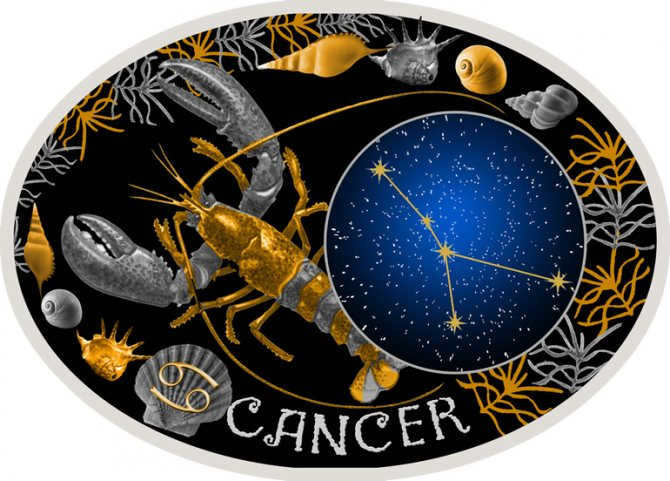
The constellation Cancer was known as Kulira by the Hindus, derived from the Greek Κoλoυρoς (Koloyros), as mentioned in the texts of Proclus.
Ancient Romans referred to the constellation as Lithoreus, meaning “dwelling on the shore,” according to Manilius and Ovid. It was also called Astacus and Cammarus in various Roman writings, while Cicero referred to it as Nepsko. All these names signify crab, lobster, or scorpion.
Athanasius Kircher stated that in the Coptic language (spoken in Egypt), the constellation was named Κλαρια (Claria), Bestia seu Statio Typhonis (Power of Darkness). Jérôme Lalande associated it with Anubis, one of the Egyptian deities often linked to Sirius. In most Germanic and Slavic languages, the constellation is known as Cancer.
The primary celestial bodies of the zodiac sign Cancer
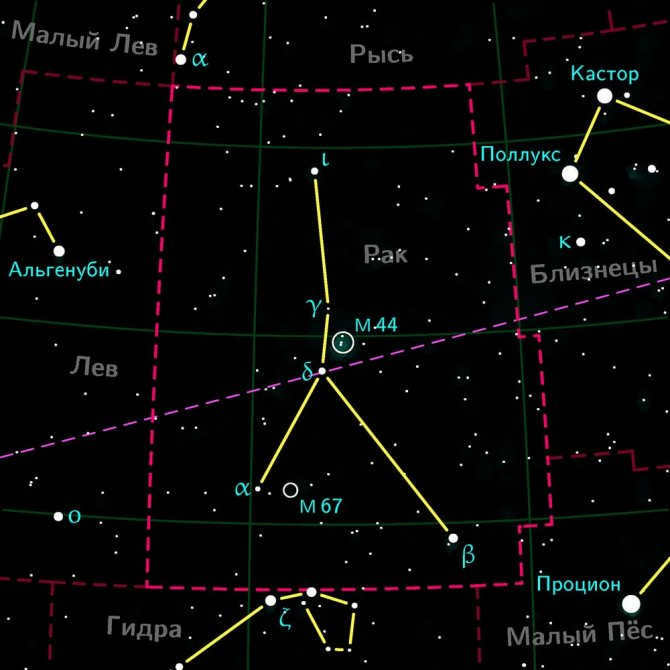
Acubensis (Alpha), Azellus Australis (Delta), and Azellus Borealis (Gamma) are the other primary stars in the constellation. Alpha, also known as “Akubens” in Arabic, means “claw” and is a white star.
Delta and Gamma, on the other hand, have the names Donkeys. According to an intriguing legend, they were placed there by the god Dionysus, who is the god of wine and holds these animals sacred. Nearby, there is a nebula called the Crèche.
It is believed that it was Dionysus who decided to care for the animals in this way and provide hay for them. As a result, the constellation was known as “Donkey Manger” until 430 AD.
M1 exhibits a unique characteristic compared to other pulsars. It stands out due to its high density and consistent energy flux, as well as its exceptional brightness in the X-ray and gamma-ray spectra. This distinctive feature has made M1 invaluable for calibrating X-ray and gamma-ray astronomy, leading to the creation of flux density units known as Crab and milliCrab.
Identified as “Taurus A” and “3C 144” in astronomical catalogs, the Crab Nebula is a notable radio source. X-ray emissions from this celestial object were first detected in the mid-twentieth century, with energy levels exceeding 30 KeV.
The pulsar’s signal is remarkably periodic and continues to be used for verifying time intervals in various instruments.
Exoplanets have been discovered in orbit around the Copernicus star

The constellation Cancer contains a star similar to the sun, known as Copernicus or 55 Cancer. It is orbited by 5 exoplanets, which are planets outside our solar system. Exoplanets are a term used to describe any planet that is not part of our solar system.
The exoplanets are named 55 Cancer e, b, c, f, and d, or Janssen, Galileo, Brahe, Harriot, and Lipperheus. Each exoplanet has its own unique properties and characteristics.
For instance, 55 Cancer f, or Harriot, is a water giant, while Janssen is referred to as a super-Earth. In 2003, a message was sent from Earth to these planets in hopes of making contact with extraterrestrial civilizations.
No. 9
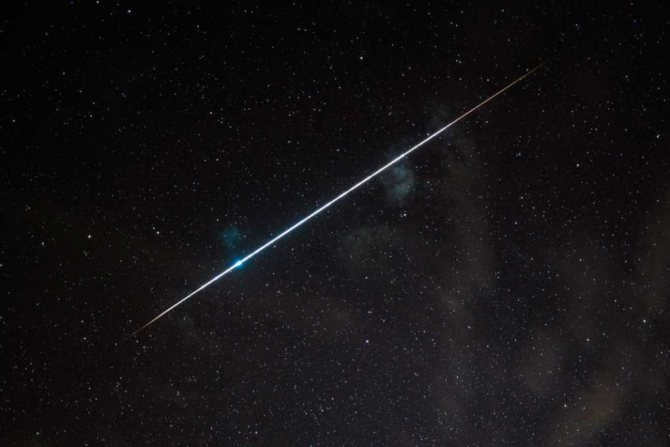
One meteor shower that is linked to this particular constellation is called Delta Cancridae. This celestial event takes place from December to February, with its peak occurring in January. Although the Delta Cancridae meteor shower only produces around 4 meteors per hour, it still provides an awe-inspiring sight.
Furthermore, we suggest checking out: Fascinating details about the planetary system
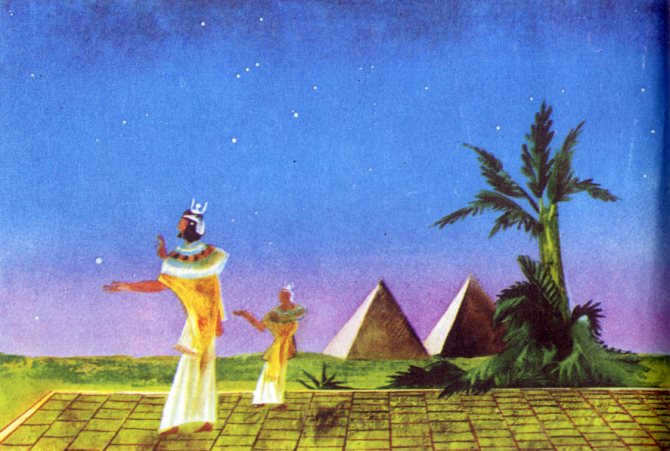
The scarab beetle holds great significance in Egyptian culture, making it one of their most revered symbols. In fact, the Egyptians even had their own representation of the constellation, as the scarab held more significance to them than the cancer constellation. Therefore, their depiction of the scarab resembled a beetle rather than a crab.
According to various accounts, the Egyptians also associated this constellation with themes of death and destruction, further emphasizing its strength, power, and the need for respect.
Origin of the Name
Around two millennia ago, during the establishment of astronomical terminology, the point where the Sun was located (specifically during the summer solstice) was named the Tropic of Cancer, due to its position in relation to the Earth’s Northern Tropic. As the Sun moved further north, the length of daylight decreased. In modern times, this point has shifted to the constellation of Taurus.
The Egyptians believed that this point symbolized death and destruction, as the cancer, known for feeding on carrion, moves forward with its tail.
According to astrology, Cancer is a symbol that is associated exclusively with femininity
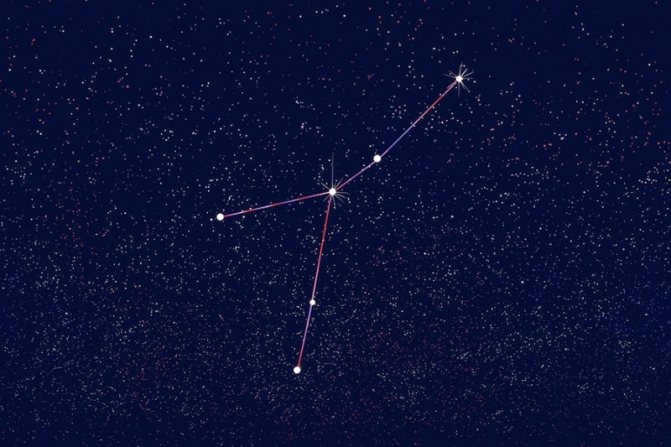
Firstly, it is important to mention that the zodiac symbol Cancer is connected to the zodiac. The zodiac signs were named after the corresponding constellations a long time ago.
Cancer represents the water element, giving it a feminine nature. In many sources, Cancer is depicted as a beautiful girl sitting or lying on top.
Therefore, Cancer is associated with the female gender. This sign is also known for its nighttime activity, inconsistency, emotionality, and sensuality.
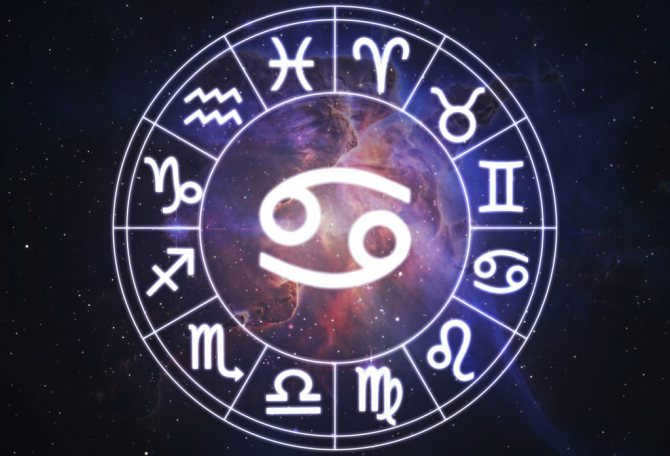
In the field of astrology, the zodiac sign known as Cancer possesses the following distinctive qualities:
- Date of birth: falls between June 22 and July 22.
- Ruler: The celestial body influencing Cancer is the Moon.
- Element: This particular sign is associated with the element of Water.
- Stone: The gemstone associated with Cancer is Ruby.
- Metal: Silver is the metal linked to this zodiac sign.
- Color: The colors aligned with Cancer are White and Yellow.
- Character: Individuals born under the sign of Cancer are generally known to possess a responsive, caring, intuitive, and occasionally capricious nature.
- Compatibility: Cancer is said to be most compatible with Pisces and Scorpio.

The Crab is a constellation situated in the northern hemisphere. It derives its name from the Latin word “cancer,” which means “crab.”
Among the 12 zodiac constellations (which are associated with the 12 astrological signs), Cancer is considered to be the least bright. It is symbolized by water. It was first catalogued by the Greek astronomer Ptolemy in the 2nd century.
The constellation Cancer contains various notable celestial objects, including the star clusters known as the Beehive Cluster (Messier 44), Messier 67, and the interacting spiral galaxies NGC 2535 and NGC 2536.
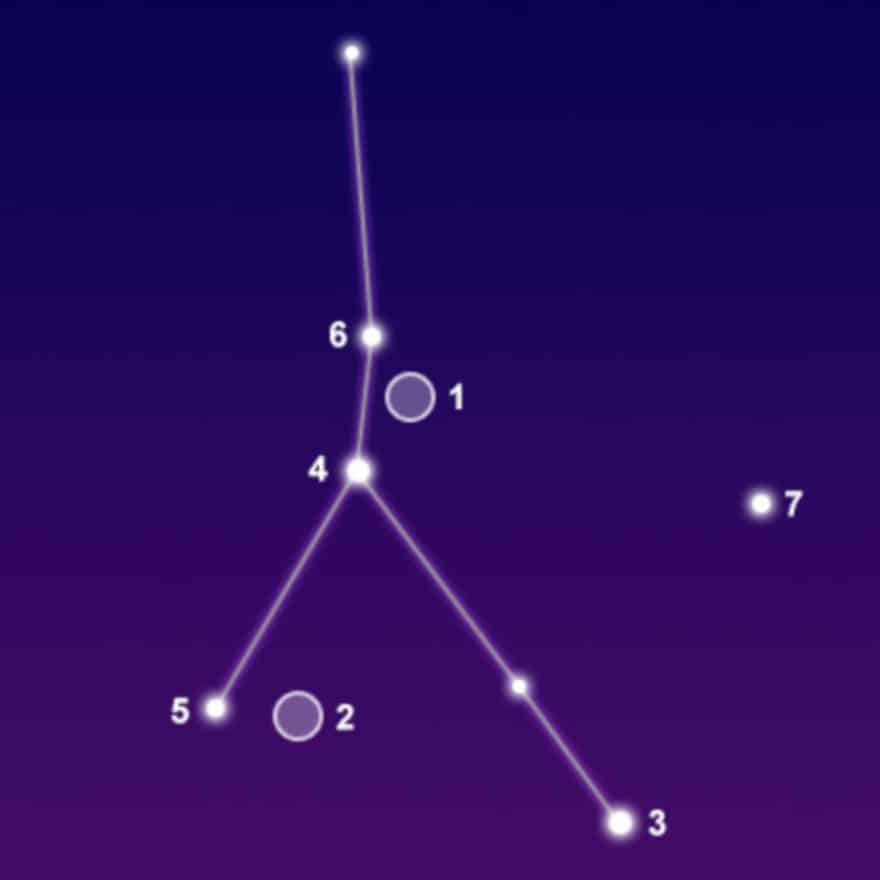
Location and chart of the Cancer constellation
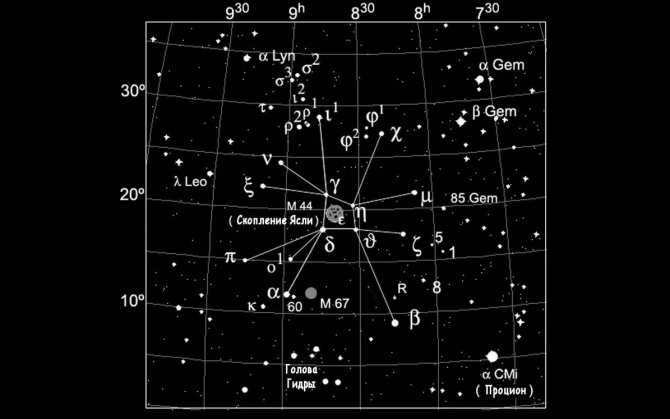
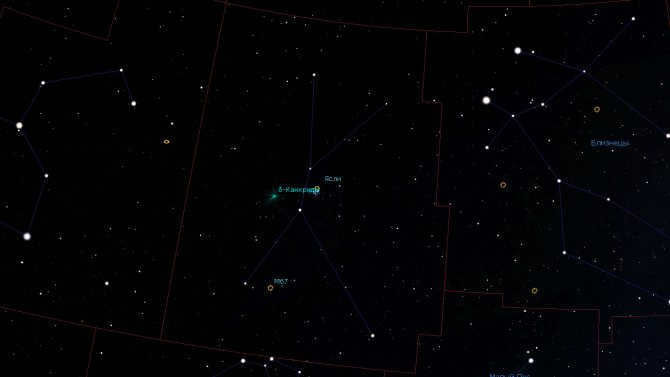
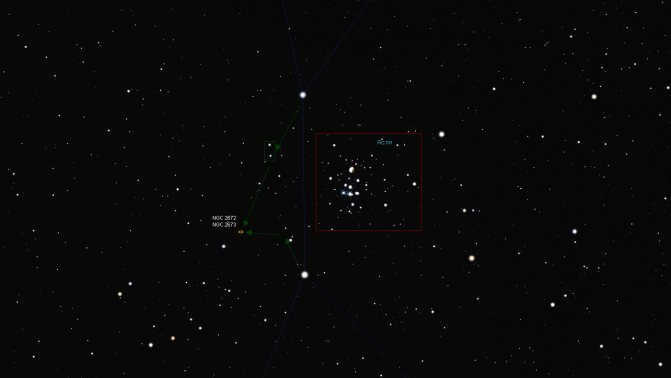
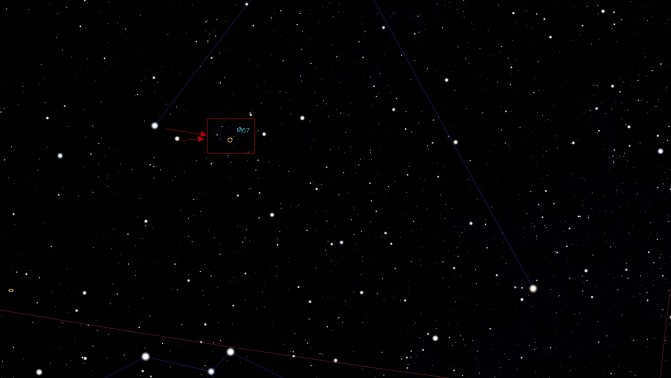
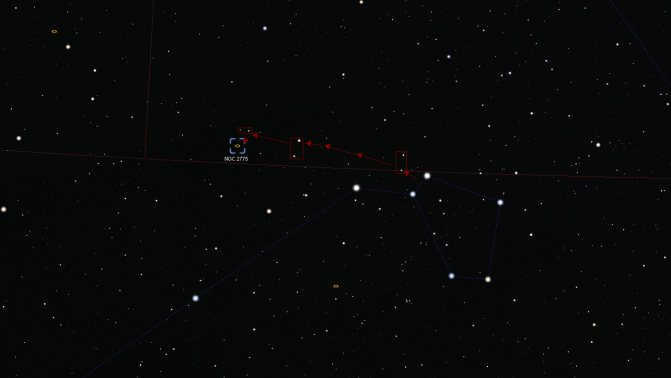
Alternative universes
A fascinating fact regarding the Cancer constellation is its inclusion of multiple exoplanets, with the most renowned being 55 Cancri e. Although it has never been officially designated as such, it was once informally referred to as the “gemstone world.” Observations of the exoplanet, initially conducted in 2010, revealed that the star it orbits contains a higher proportion of carbon compared to oxygen. In 2012, further research was conducted to analyze the exoplanet’s radius and mass.
Based on its composition, it was postulated that the planet possesses a substantial layer of graphite overlaying a significant diamond stratum.
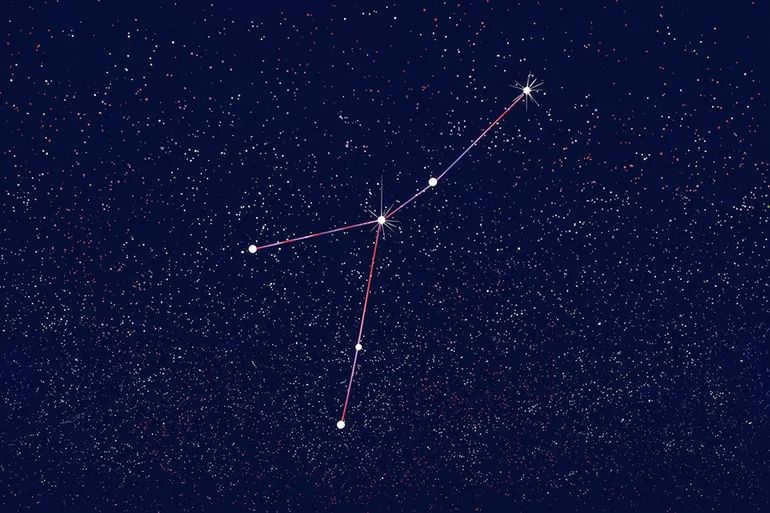
The Spitzer Space Telescope has been monitoring the thermal emissions of 55 Cancri e, and findings from 2013 suggested that the planet could have a high level of humidity and warmth. Research conducted in 2016 indicates that the planet might be extremely hot, with its surface likely covered in molten lava. Daytime temperatures on this exoplanet can reach a scorching 4000°F (2400°C), dropping to half that during the night.
Gazing at the celestial sky is truly captivating. The number of shimmering dots in the darkness appears to be infinite. This notion is likely true, as the contrary has yet to be proven. However, despite the vastness of space, celestial bodies, much like humans, have their own neighbors.
The constellation Cancer is situated to the east of the constellation Gemini. It can be observed most effectively in February, when it is nearly directly above. Lynx can be found to the north. It is a rather expansive constellation, ranking 28th in terms of size (out of 88). March is the ideal time to view it.
Leo is positioned directly to the west of Cancer. It is said to symbolize the Nemean Lion slain by Hercules. It is easiest to observe on a late evening in April. Hydra is located to the south of Cancer, and it is the largest and longest of the 88 constellations in the night sky.
It encompasses an area of over 1,300 square degrees. Hydra is most visible in late spring. The Lesser Dog is found to the southwest of Cancer and follows shortly after the constellation Orion.
Key Features of the Cancer Constellation
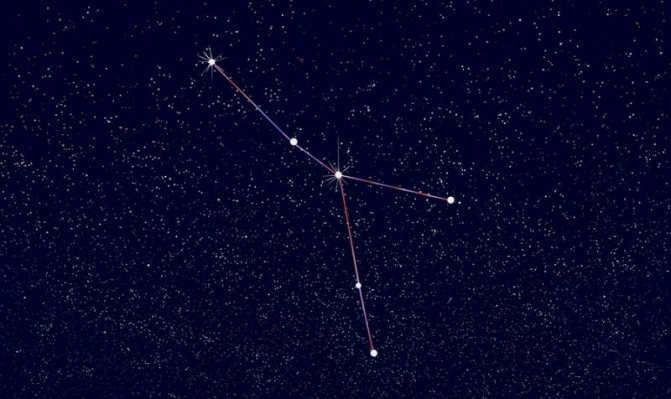
The constellation Cancer is an asterism that, like other constellations, has been extensively studied by astronomers. However, new information is constantly being added and the parameters of Cancer are periodically refined. Currently, the characteristics of this constellation are as follows:
- The Latin name for Cancer is Cancer and its abbreviation is Cnc;
- The symbol of Cancer is Cancer;
- It can be observed in direct ascension from 7:48 a.m. to 9:15 a.m.;
- The declination of Cancer ranges from +7 degrees to +33 degrees 30 minutes;
- The area of Cancer is 506 square degrees;
- The brightest star in the cluster is Altarf;
- There are Delta Canciridae meteor streams;
- The Cancer constellation can be easily observed in the sky from January to February.
These distinct features enable scientists to locate the constellation in the sky promptly and commence their research on it.
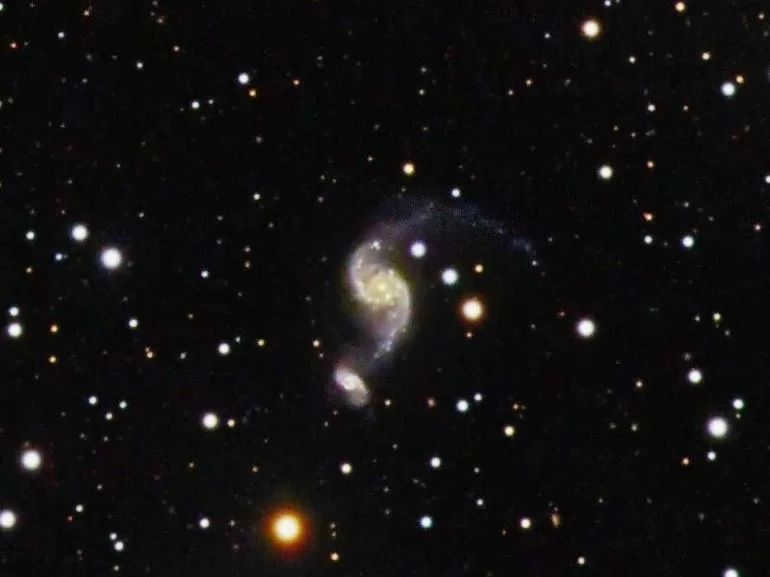
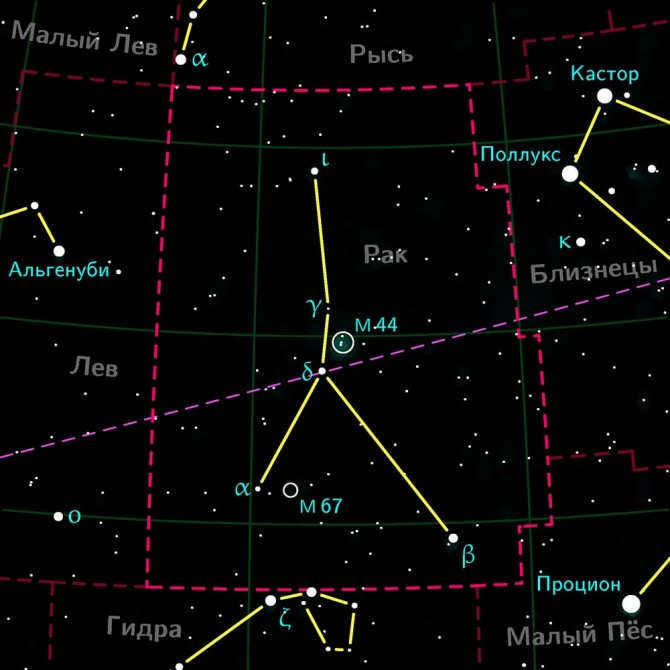

Number 3
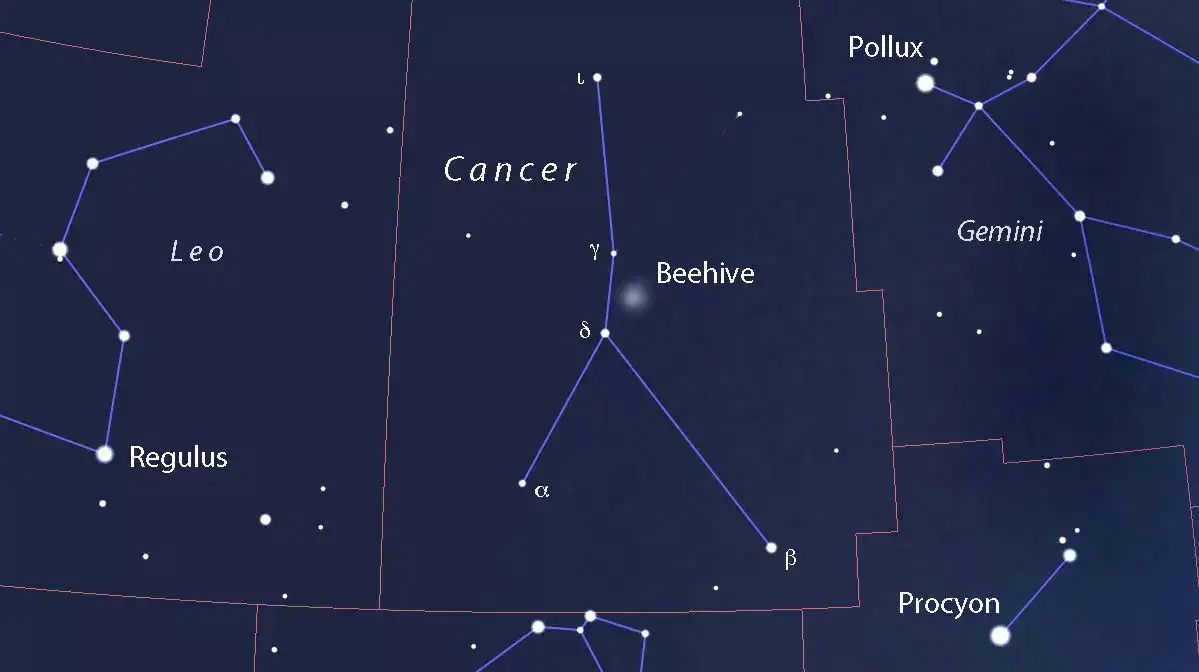
The constellation of Cancer was initially documented by the Greek astronomer Ptolemy. However, this particular constellation was known prior to that, albeit with variations across different cultures.
For instance, in ancient Egyptian culture, this constellation was depicted as a scarab, a revered symbol of eternal life.
In Babylonian culture, a turtle was illustrated instead of a crab.
Out of the 88 constellations in existence, Cancer is the 31st largest in terms of magnitude.
The legend of the Cancer constellation
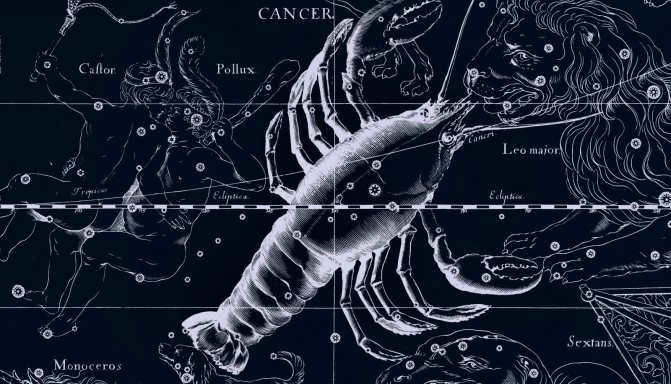
Depiction of the constellation Cancer with other mythical creatures and gods
Considering the constellation’s ancient Greek origins, it comes as no surprise that there exists a myth explaining its existence. When Heracles engaged in battle with the Lernaean Hydra, the Hydra quickly realized that she stood little chance of triumphing in a fair fight. As a result, she devised a plan involving a crayfish to divert the attention of the demigod, giving her an opportunity to strike.
Fascinating fact: The Lernaean Hydra is a colossal monster with multiple heads sprouting from its shoulders, emitting noxious fumes.
The creature approached its target and attempted to nip at his heel. However, Heracles swiftly reacted and delivered such a powerful kick to the crab that it soared into the heavens, transforming into a constellation.
There is a theory suggesting that instead of kicking, Heracles actually crushed the unfortunate arthropod. Subsequently, Hydra, in gratitude for the attempt to assist her, independently placed it in the sky.
Moreover, this myth was used by ancient astronomers to explain the insignificance of Cancer compared to other constellations. Being a humble and insignificant creature, Cancer’s star version was also unremarkable and easily overlooked in the presence of grand mythical beings and gods.
Various names
In ancient times in Greece, the crab was referred to as Καρκινoς (Karkinos) by the poet Aratus. This name was also adopted by Hipparchus and Ptolemy. The Latinized version of the Greek word, Carcinus, was used in the Alphonsine tables.
There are also different names for the constellation in other languages:
- The Sanskrit language, which shares a common ancestor with Greek, uses the names Karka and Karkata for Cancer.
- In Telugu, it is known as Karkatakam.
- The Kannada language uses Karkataka or Kataka.
- In Tamil, it is referred to as Karkatane.
- And in Sinhalese, the name is Kagtaka.
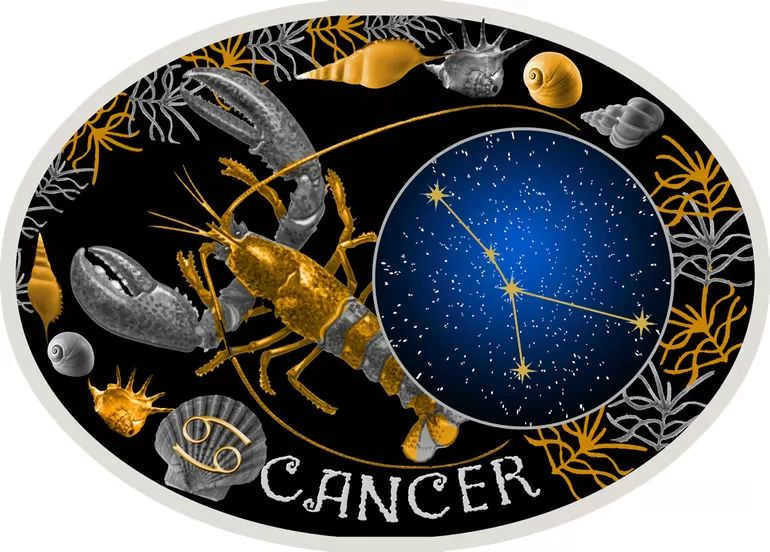
The constellation Cancer was known as Kulira to the Hindus, derived from the Greek Κoλoυρoς (Koloyros), mentioned in Proclus’ texts.
Ancient Romans referred to the constellation as Lithoreus, Astacus, Cammarus, or Nepsko, all meaning crab, lobster, or scorpion.
Athanasius Kircher claimed that in the Coptic language in Egypt, the constellation was called Κλαρια (Claria), Bestia seu Statio Typhonis (Power of Darkness). Jérôme Lalande associated it with Anubis, an Egyptian deity often linked to Sirius. In most Germanic and Slavic languages, it is known as Cancer.
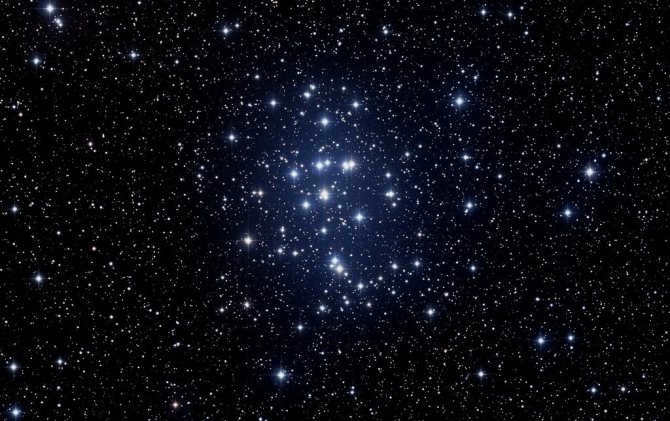
The star cluster Messier 44 is located in the constellation Cancer, which is relatively small compared to other cosmic formations. Despite its size, the cluster is still noticeable due to the presence of several prominent stars:
- Acubens. This star, also known as the alpha of the constellation, is located 174 light-years away. Acubens shines with an intensity 23 times greater than that of the Sun. However, there are certain periods when Acubens is obscured by the Moon and cannot be observed. In ancient times, Arab astronomers referred to this star as “claws”.
- Altarf. Beta Cancer is a binary star system consisting of a giant star with an orange glow and its companion. Together, these stars have a total brightness of 3.5, making Altarf the most prominent source of light in the cluster.
- Azellus Australis. The delta is an orange giant that is four times larger than the Sun. It is located 180 light-years away from Earth and is considered the second brightest star in the constellation. It is also a member of the Creche cluster.
- Azellus Borealis. This star has the ability to be hidden behind the Moon at certain times. It is a white subgiant located 158 light-years away. It holds the status of Gamma of Cancer. According to myth, Borealis is the donkey that one of the gods rode into battle against the Titans.
- 55. This object consists of two dwarf stars. Despite being only 41 light-years away, it cannot be seen without a telescope with strong magnification. There are five planets orbiting one of the dwarf stars.
- Tegmin. Comprises of four stars and is the zeta of the constellation. The orbital period of the system is 17 years.
- Lambda. Is one of the most distant stars from the Solar System: it takes 419 years for light from the white dwarf to reach Earth. The object has a visible magnitude of 5.92 m.
- Xi. Contains a yellow giant and its companion, situated at a distance of 381 light-years.
Fascinating fact: The star Azellus Australis was named “Arkushanangarushashutu” by the Babylonians. This translates to “The star of the constellation Cancer, located in the southeast” and is considered the longest name of a celestial object.
The constellation Cancer is composed of numerous stars, although most of them have low brightness, which is why they are seldom recognized by astronomers.
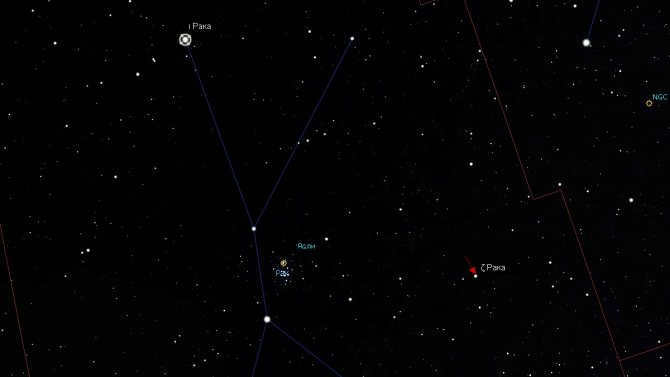


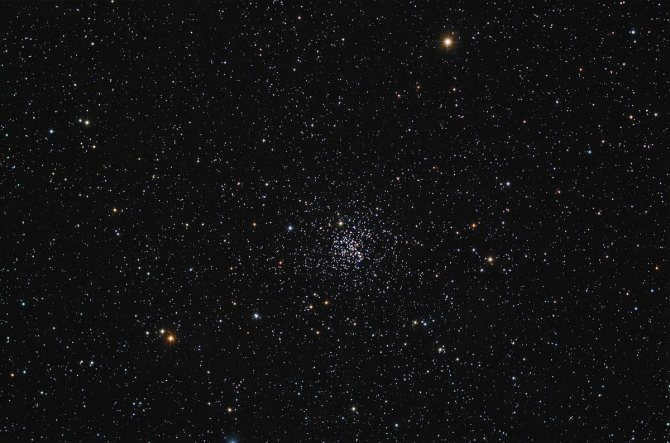
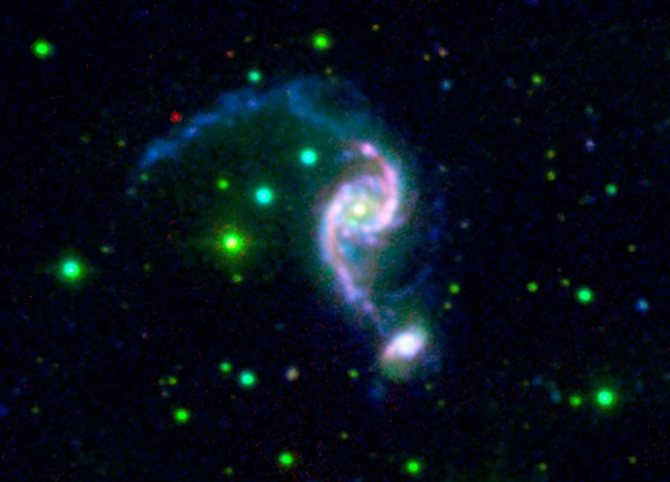
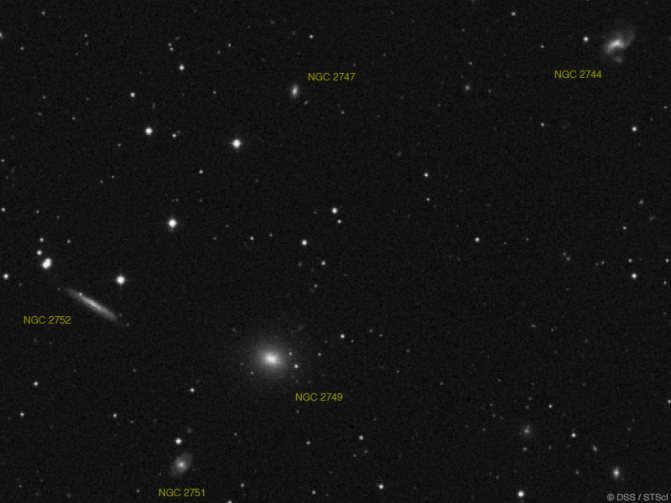
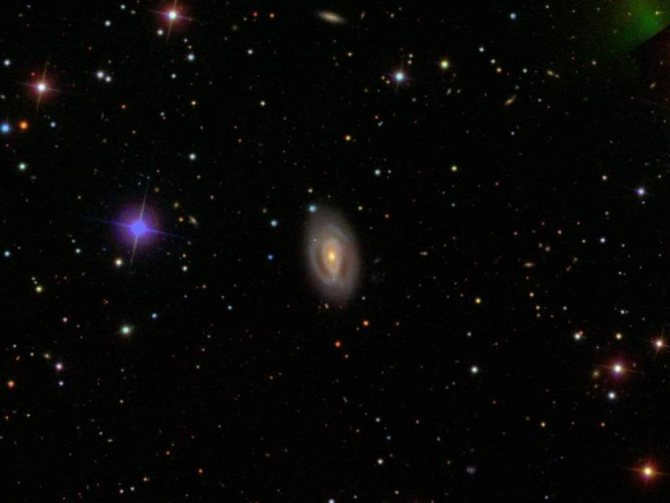
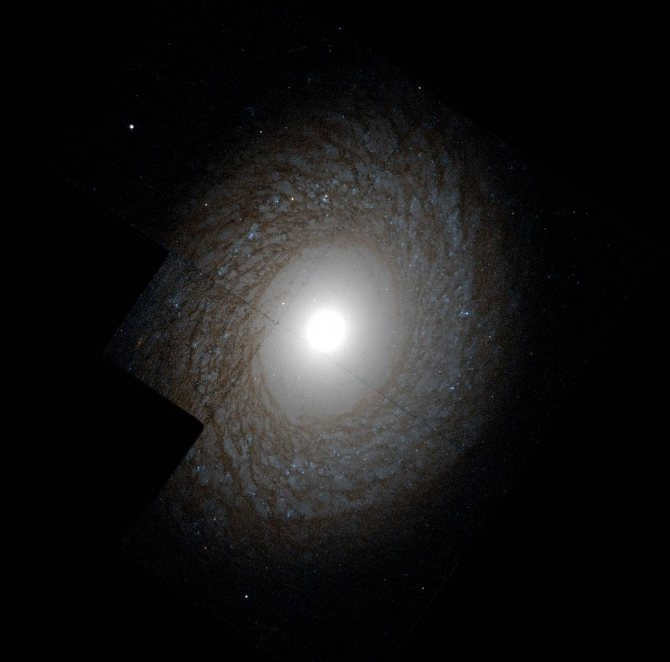
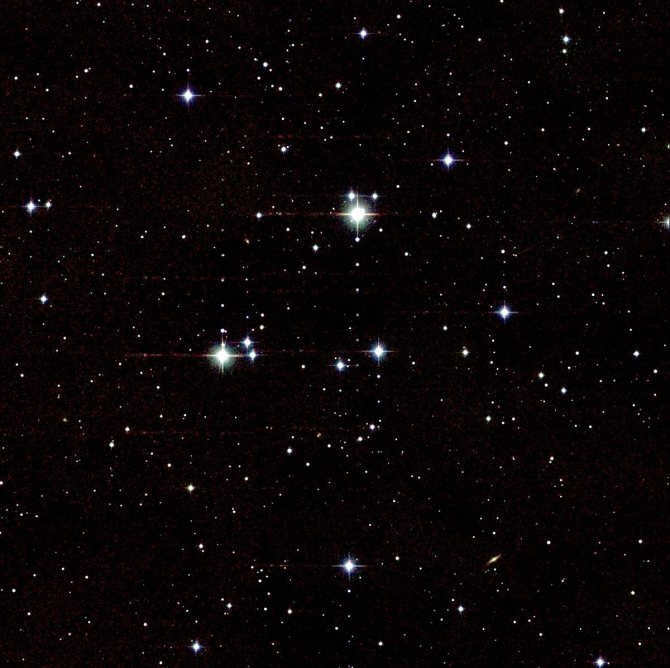
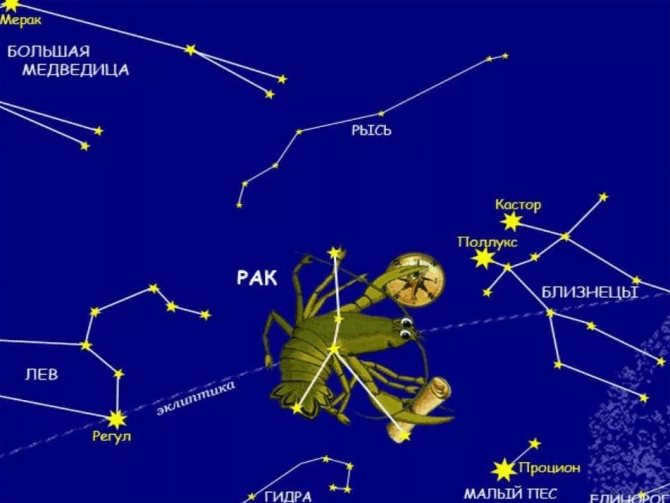
The constellation Cancer can be observed in the northern hemisphere and is visible only on the most luminous nights. To locate it, one can simply look between the constellations Leo and Gemini. These two zodiacal constellations are widely known, but it is often forgotten that Cancer is nestled between them.
Other constellations in the vicinity include the Small Dog, the Hydra, and the Lynx. Consequently, Cancer finds itself in the company of five constellations.
Objects in the constellation Cancer beyond Earth
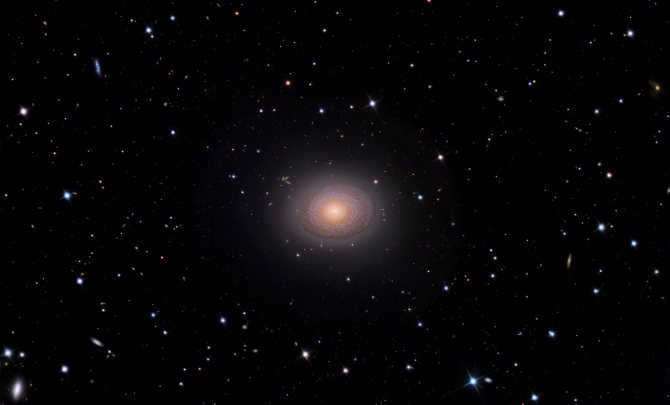
NGC 2775 Galaxy
Within the Cancer constellation, astronomers regularly observe a variety of intriguing objects. Currently, it is possible to compile a roster of celestial bodies that possess distinct characteristics:
- Breeding Ground. Situated 577 light years from Earth, this stellar cluster is estimated to be over 600 million years old, making it relatively youthful in cosmic terms. Comprising more than a thousand luminaries, two-thirds of which are dwarfs and the remainder being Sun-like stars, the objects’ brightness ranges from 6 to 6.5 m. This nursery is readily visible to the naked eye, hence its discovery in ancient times. Ptolemy was the first to provide an elaborate description and catalog them.
- Caldwell-48. This is a galaxy with a spiral shape that is located approximately 56 million light-years away from our solar system. The arms of this galaxy can be found surrounding a bright center. It is composed of numerous stars and planets.
- NGC 2535 and 2536 are two galaxies that are situated in close proximity to each other, resulting in their mutual influence.
- NGC 2500 is a spiral galaxy that is positioned 33 million light-years away. It was first discovered in the 18th century and was originally designated as part of the constellation Lynx.
- NGC 2608. This galaxy has a diameter of 62,000 light-years. Its structure undergoes regular changes as its arms rotate around the central region. Astronomers periodically observe the occurrence of supernovae and the emergence of other celestial objects within NGC 2608, which is located at a distance of 92 million light-years.
What makes comets interesting? Their description, characteristics, differences from asteroids, and even photos and videos.
Here’s an interesting fact: many objects that are part of the constellation periodically “disappear” behind the Moon. Astronomers have to wait until they reappear in open space.
The Cancer constellation is fascinating to study. It consists of both ancient and relatively young objects that come together to form a cohesive picture, providing insights into the cosmos and its structure.

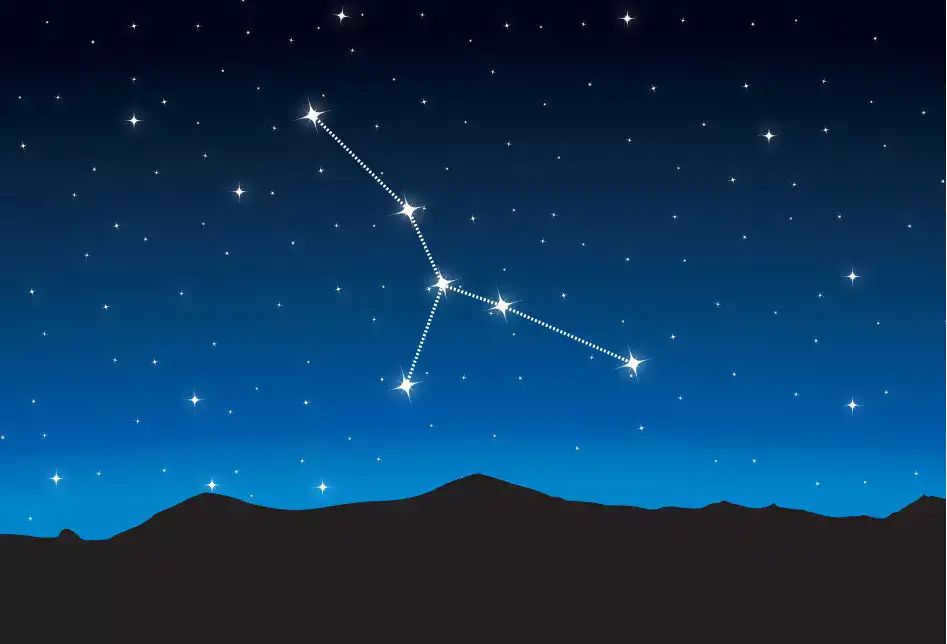
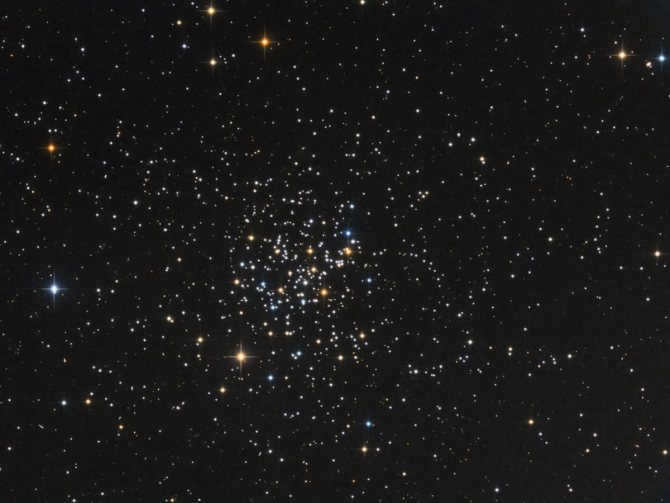
Constellation of Cancer: Home to Exoplanets in Orbit around the Star Copernicus

Copernicus, a sun-like star, is part of the Cancer constellation. It is also known as 55 Cancer. Orbiting around it are five exoplanets, which are planets located outside our solar system. Exoplanets are a term used to describe any planet that is not part of our solar system.
The names of these exoplanets are 55 Cancer e, b, c, f, d or Janssen, Galileo, Brahe, Harriot, and Lipperheus. Each exoplanet has its own unique properties and characteristics.
For instance, Harriot, also known as 55 Cancer f, is a water giant. Janssen, on the other hand, is referred to as a super-Earth. In 2003, a message from Earth was sent to these planets in hopes of reaching out to other civilizations.
Observing the Sky: Tips for Spotting Celestial Objects
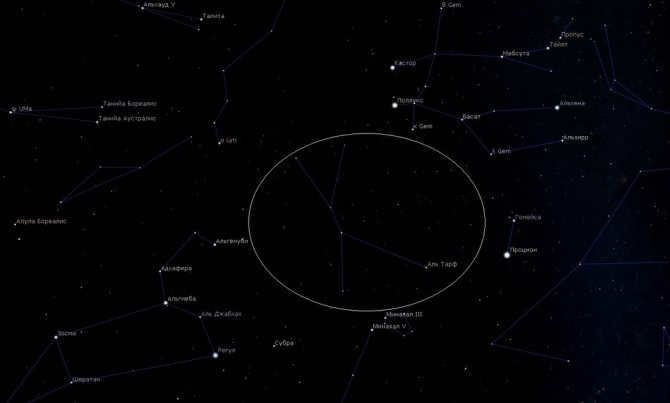
The location of Cancer in relation to other constellations is not the most prominent in the sky, so observing it requires the use of binoculars at the very least. It is also recommended to venture outside of city limits to avoid the interference of streetlights and lampposts obstructing the view of the stars.
To locate the cluster, one must look towards the south, where Gemini and Leo are situated. Cancer will be positioned between these two constellations. When observing through binoculars, Acubens, the brightest star in the cluster, becomes immediately noticeable. In the Russian Federation, it is best to observe the cluster during the winter months.
Interesting fact: Starting from July 20, the constellation Cancer becomes hidden behind the Sun for a few days, rendering it impossible to observe.
Origin of the name
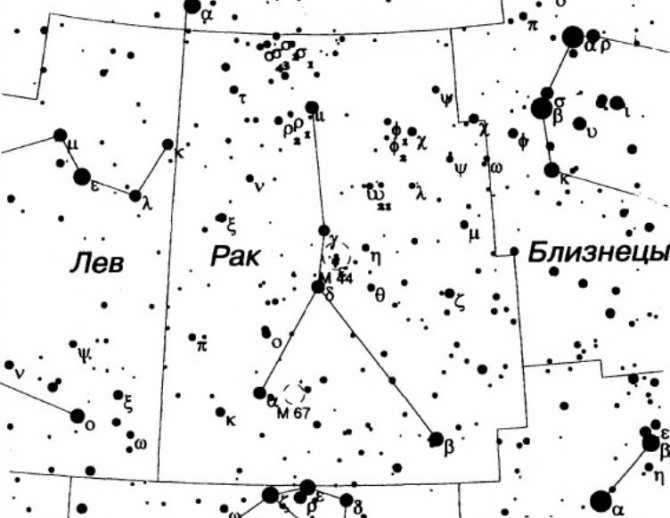
On a star chart, you can find the region of the Cancer constellation. The origin of the constellation’s name is closely tied to the myth surrounding its formation. The ancient Greek astronomer Ptolemy was the first to observe and describe this cluster. To simplify classification and identification, he assigned names of gods and mythical creatures to various celestial objects, which were then represented on the star map.
Crèche and Donkey
The constellation, Crèche and Donkey, features two prominent stars known as Gamma and Delta. These particular stars have been aptly named Donkeys, as they hold significant symbolism in Greek mythology. According to the ancient tales, these stars were placed in the sky by Dionysus, the god of winemaking and the youngest member of the Olympian pantheon. As the sacred animals of Dionysus, the Donkeys serve as a reminder of his connection to the heavens. However, the inclusion of these stars in the constellation also holds deeper meaning, which unfolds in the following events.


Hera, consumed by jealousy, was unwavering in her disdain for her husband’s mistresses and their illegitimate offspring. Her deep-seated animosity led her to seek the destruction of Dionysus. One fateful day, she transformed him into a deranged lunatic. Desperate for a solution, Dionysus sought the guidance of his father Zeus’ oracle in Dodona. The priests instructed him to approach the sacred oak tree and decipher the messages conveyed through the rustling of its leaves, in order to regain his sanity. However, a colossal marsh impeded his path. It was only through the fortuitous presence of two donkeys nearby that he was able to navigate the treacherous terrain. Grateful for their assistance, Dionysus immortalized both creatures by elevating them to the celestial realm.
Originally, the constellation that we now know as Cancer was called “Donkey’s manger.” However, around 430 AD, the name was changed to Cancer. This change is believed to have been influenced by the Greek astronomer Euktemon.
The symbol representing the Cancer constellation is 69.
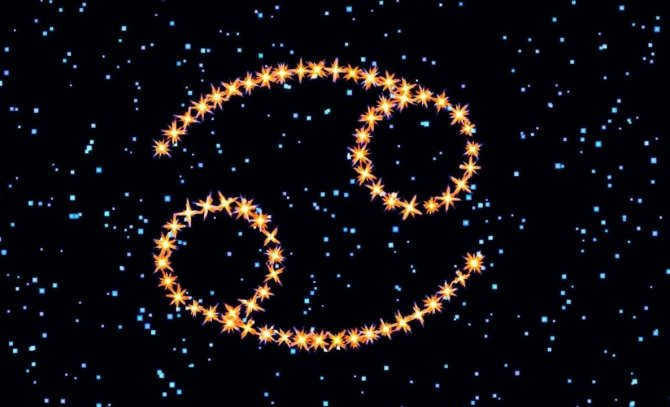
The representation of the Cancer constellation is commonly known as the number “69”. It is depicted with a slight rightward tilt. This symbol emerged relatively recently. In ancient times, the Greeks depicted an actual crab on the celestial map. However, due to the time-consuming nature of this drawing, a simpler version, the number “69”, was later invented. The symbol can have various interpretations depending on the context. There are several main interpretations of its meaning:
The number “69”, which is the most popular and widely accepted version.
Two claws stacked on top of each other. If you observe a live crab and its way of arranging its limbs in space, it truly resembles this symbol.
Even though there is no consensus on the exact meaning of the symbol of the constellation Cancer, it continues to be widely used globally because of its simplicity and established historical significance.
The scarab beetle was the symbol used by the ancient Egyptians to represent the constellation
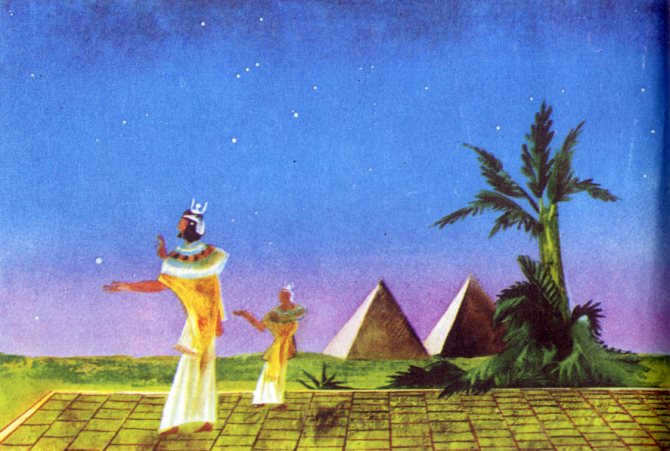
The scarab beetle holds great significance in Egypt and is considered one of the most revered symbols. The Egyptians had their unique interpretation of the constellation, as they saw the scarab beetle as more relevant to their culture than the crab. Thus, their version of the constellation resembled a beetle rather than a crab.
Other sources suggest that the Egyptians associated this constellation with death and destruction, signifying its strength, power, and the need for respect.
Astrological Significance of the Cancer Constellation
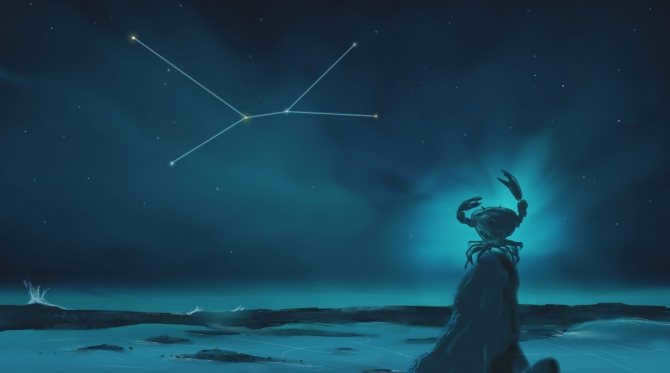
Illustration of the constellation with the legendary crab
The astrological period for the Cancer constellation begins on June 22 and continues until July 22. Individuals born during this time are considered to be Cancer signs. The Sun is within the cluster zone from July 21 to August 9.
Individuals belonging to this zodiac sign tend to be possessive and caring towards their family and loved ones. Their character may exhibit contradictory qualities, such as being hardworking and successful in their careers, but unusually lazy during their leisure time.
Those born under this sign constantly learn valuable lessons from past experiences and accumulate wisdom. This enables them to avoid making mistakes in the future and improve their overall life situation.
When it comes to choosing a life partner, Cancer individuals may not always act with complete sincerity. They may be drawn to someone solely based on their financial stability or well-being. However, they are also capable of deeply feeling the loss of their love.
The Influence of Mythology and Horoscope
According to Greek mythology, the presence of the Cancer constellation in the sky is attributed to the will of the gods. This is explained through the story of one of Hercules’ twelve labors, in which he battled the multi-headed Hydra. In an attempt to hinder Hercules, the clever Hera sent the crab-like creature, Karkinos, to distract him during the fight. However, Hercules swiftly defeated Karkinos by kicking him with such force that he was catapulted into the heavens, forever immortalized as a constellation.
As per alternative sources, Karkinos attempted to seize Hercules’ toes, but the hero effortlessly squashed the crab under his foot. In recognition of the crustacean’s valiant efforts, Hera bestowed upon it a celestial position. Certain experts have proposed that the inclusion of the crab in the Hercules mythos was a later addition, aligning the twelve labors with the twelve Zodiac signs.
